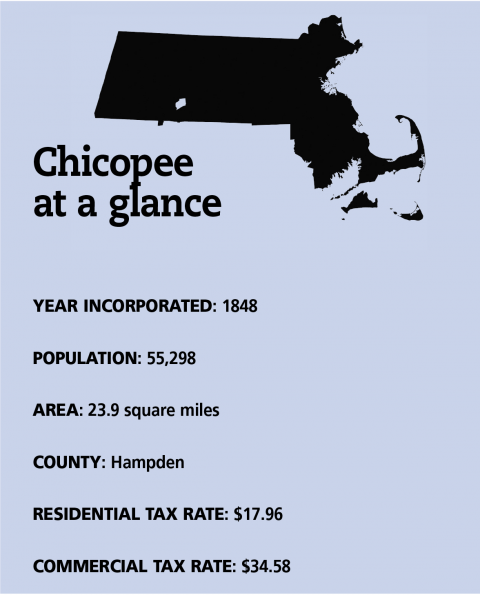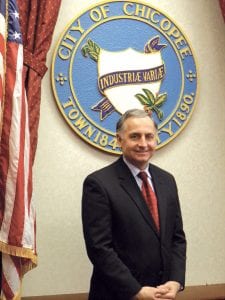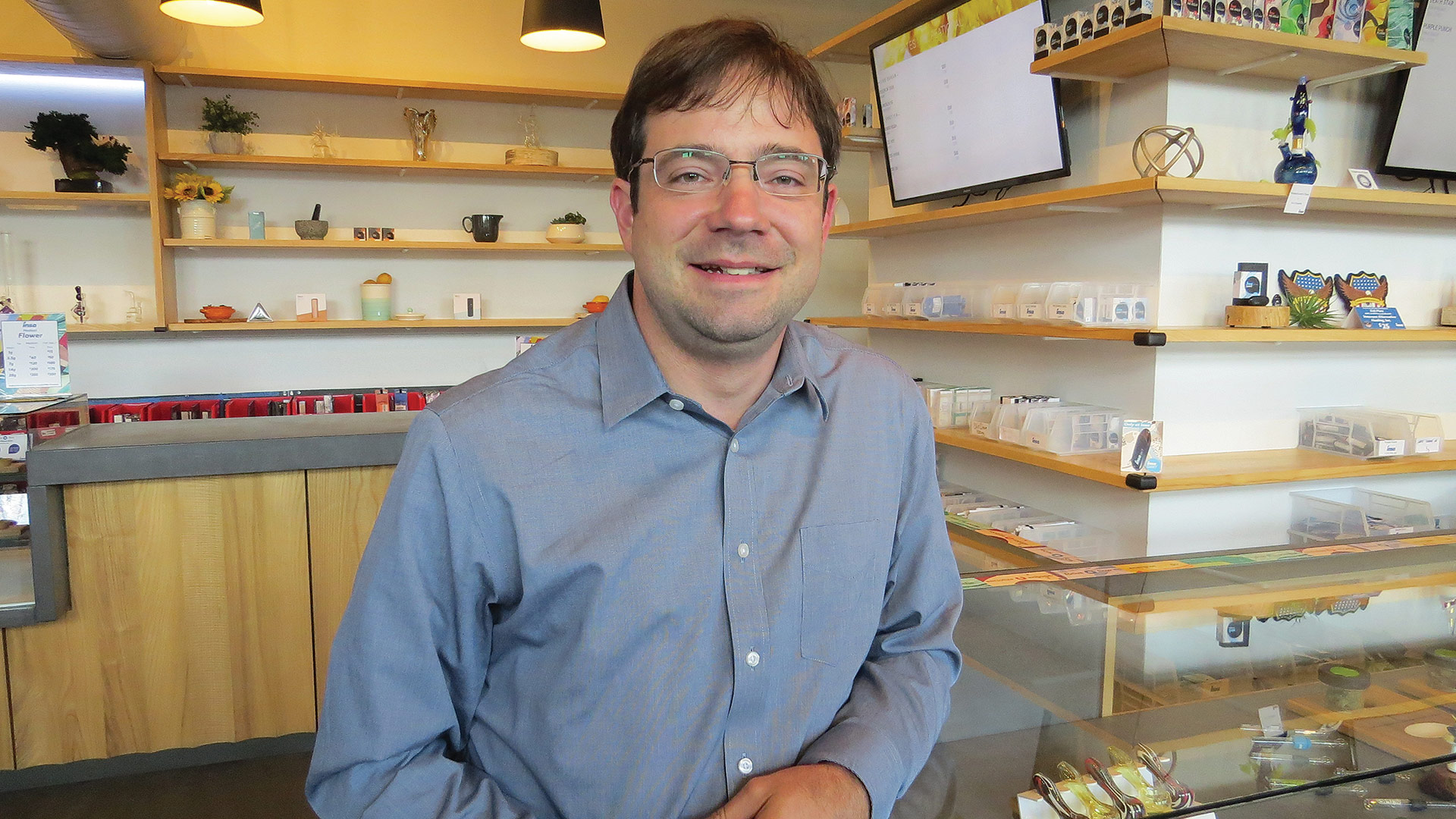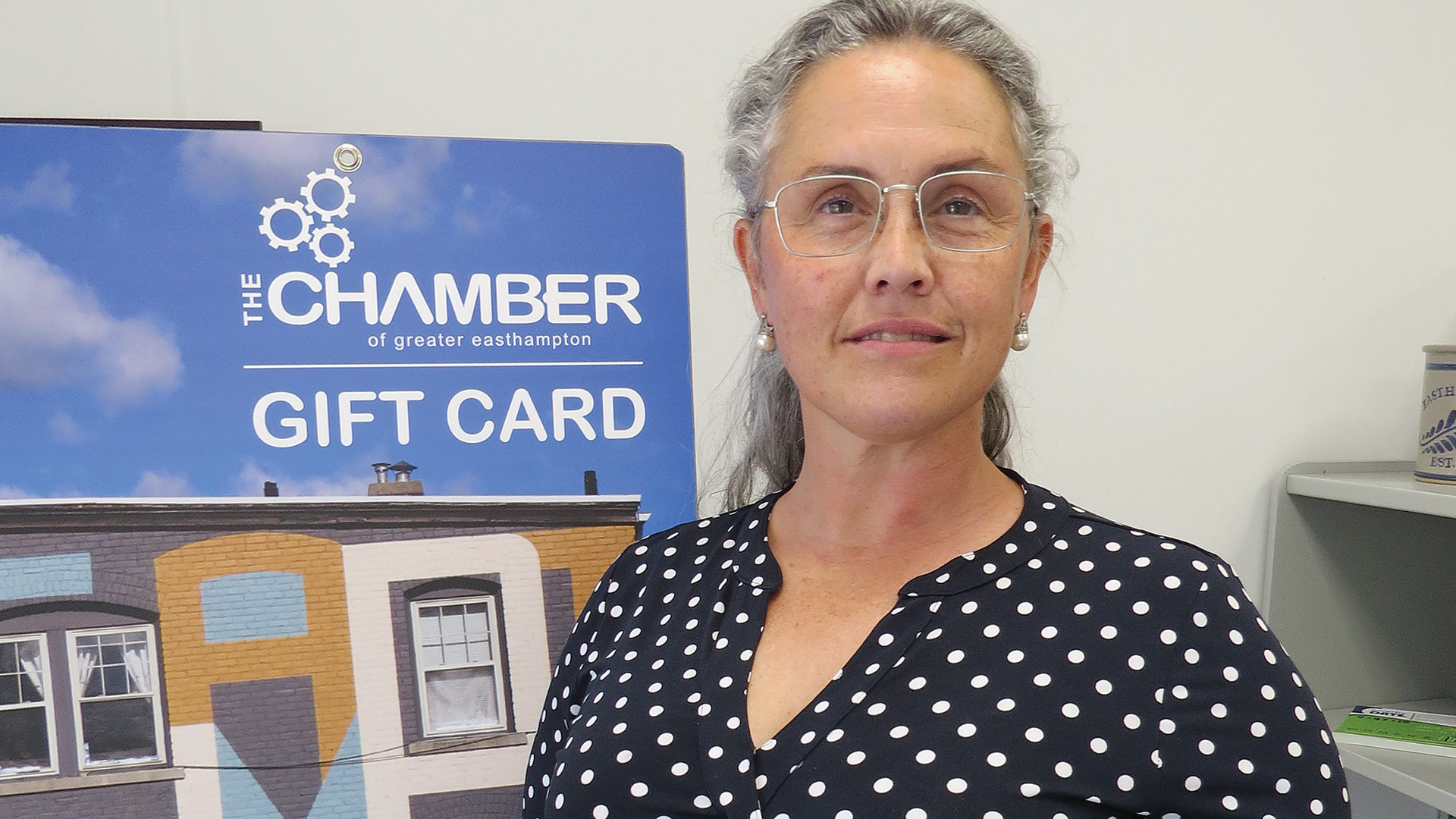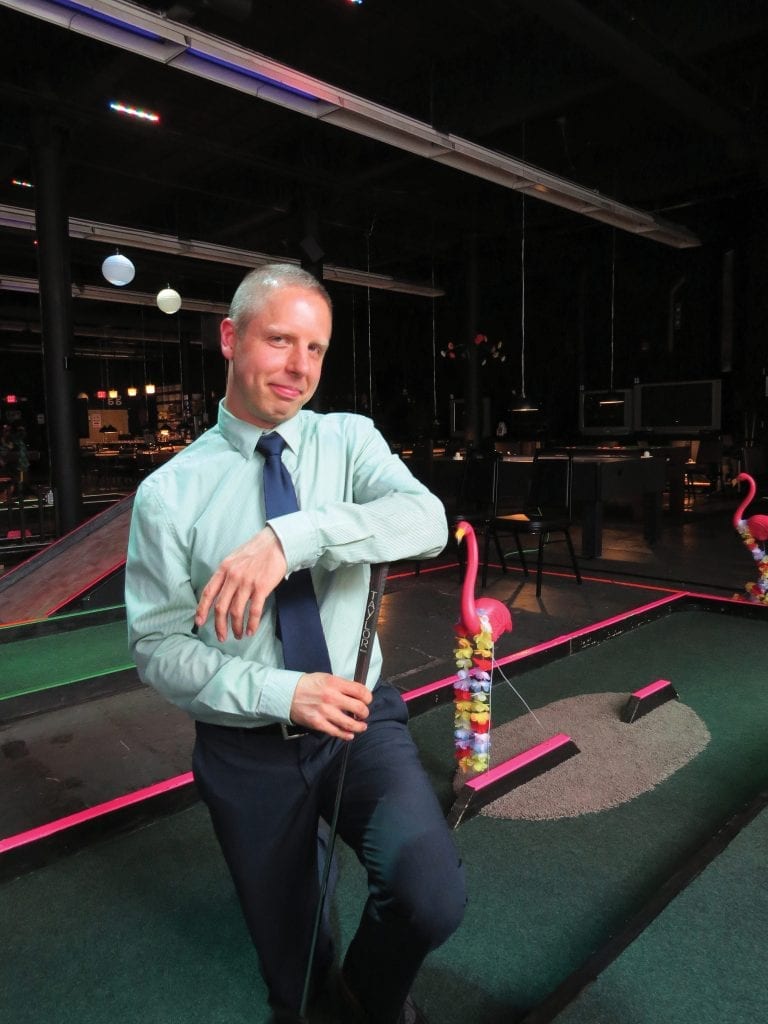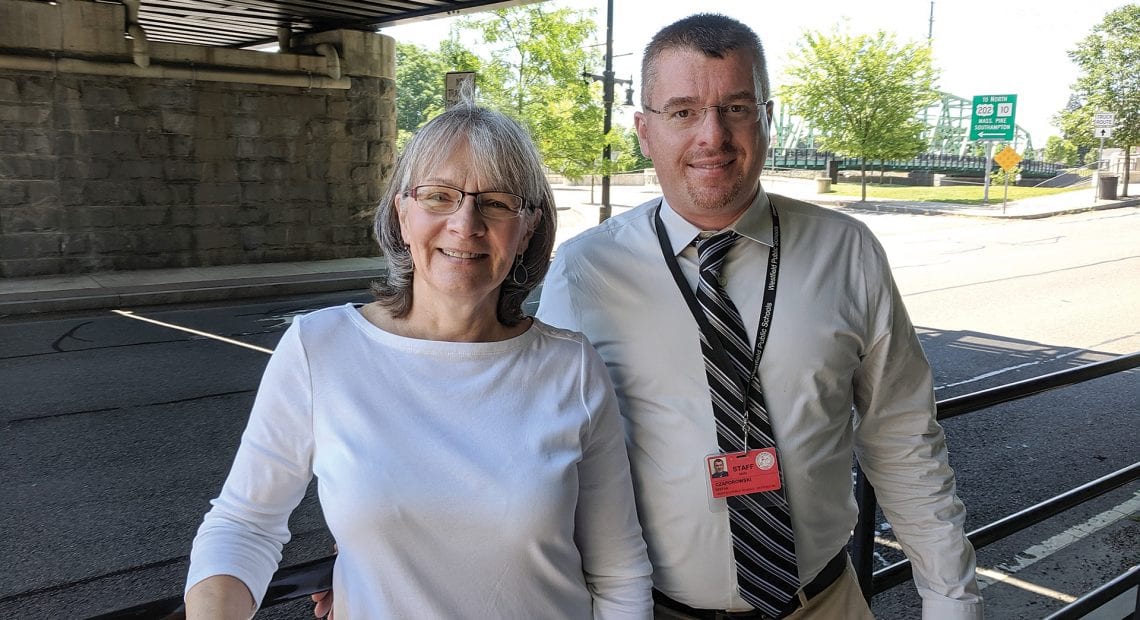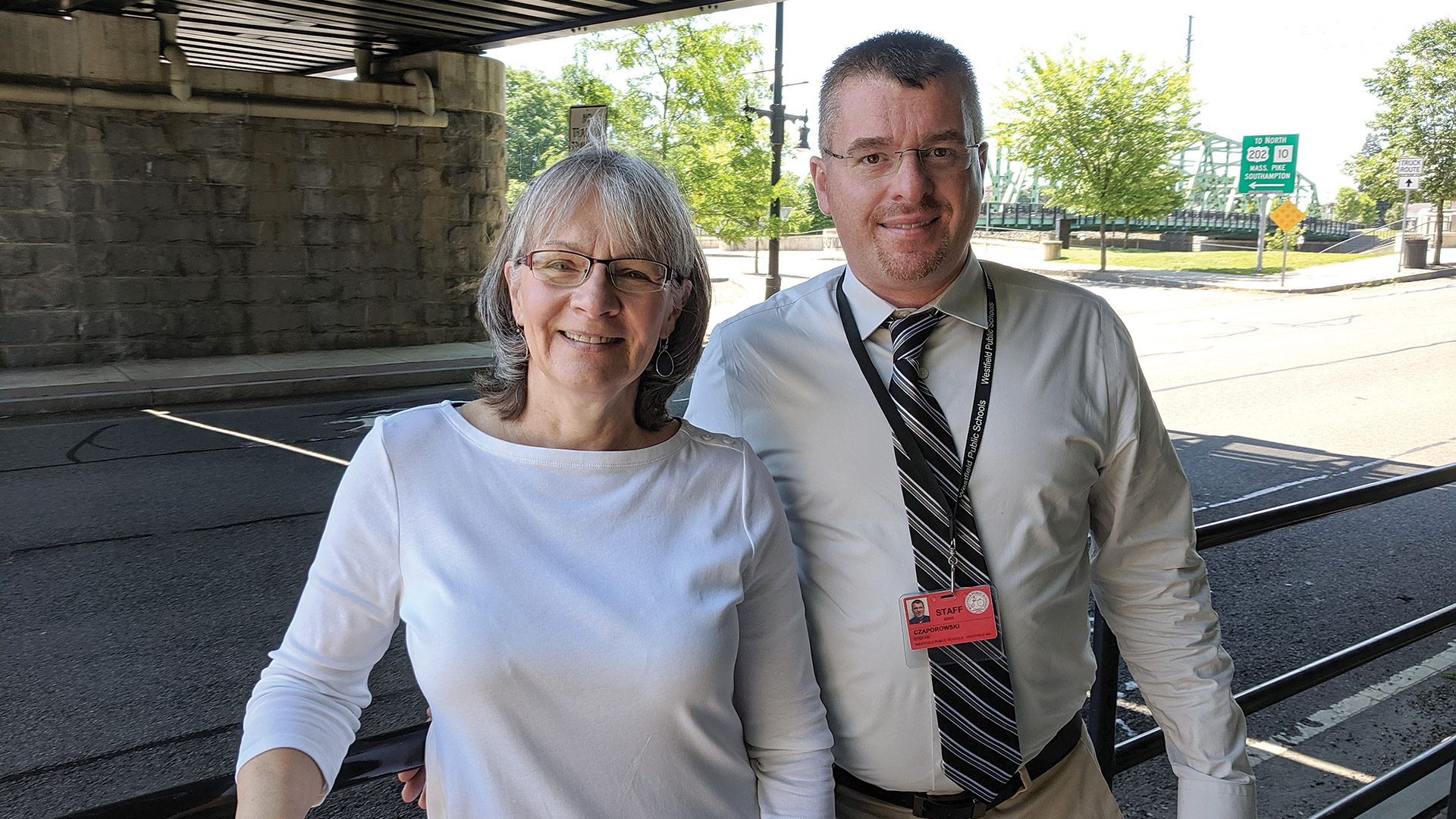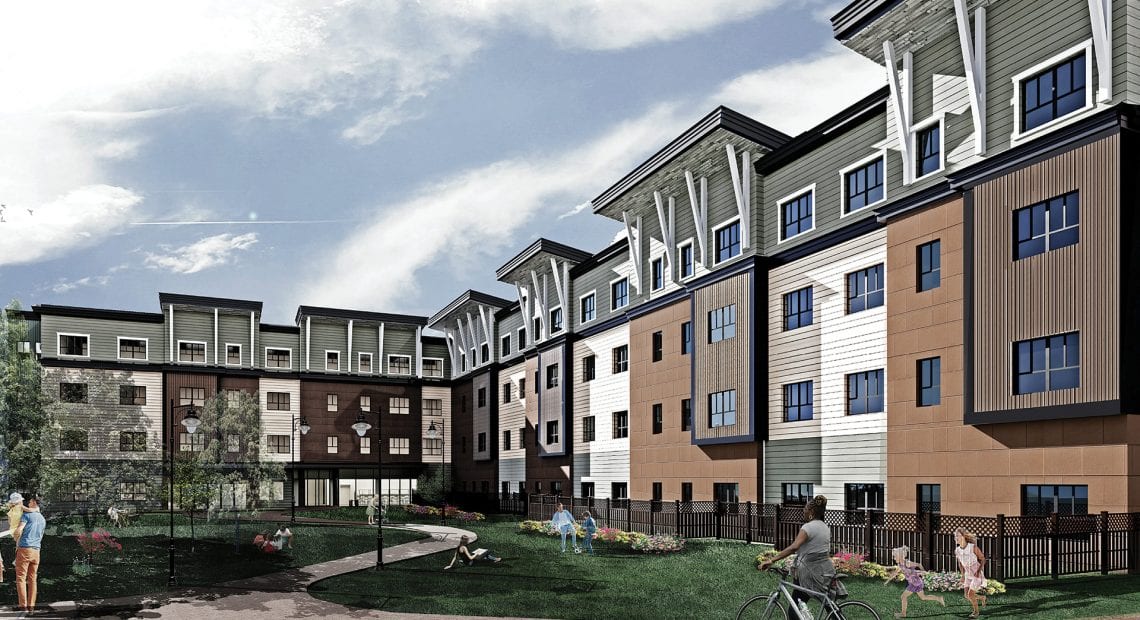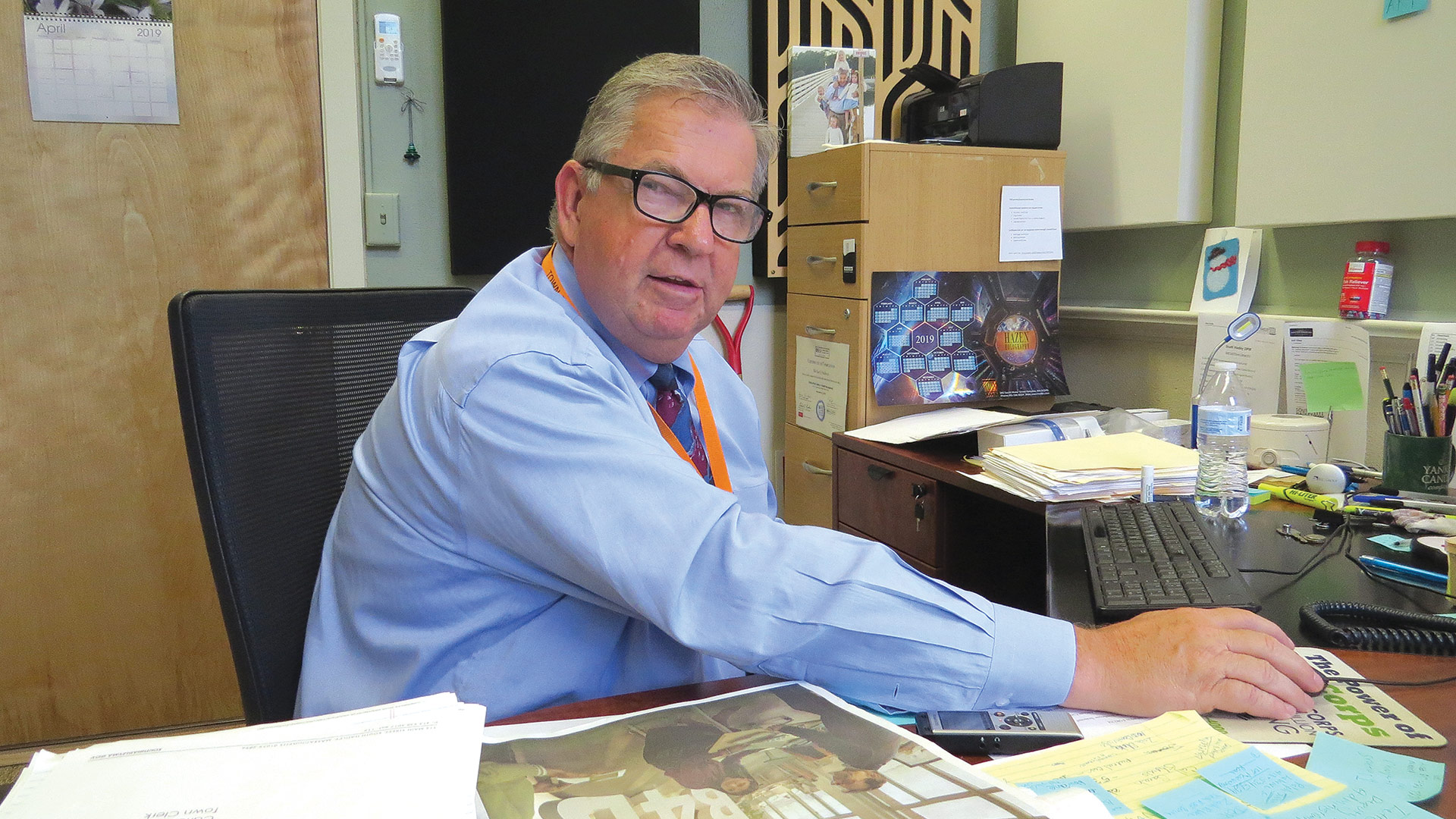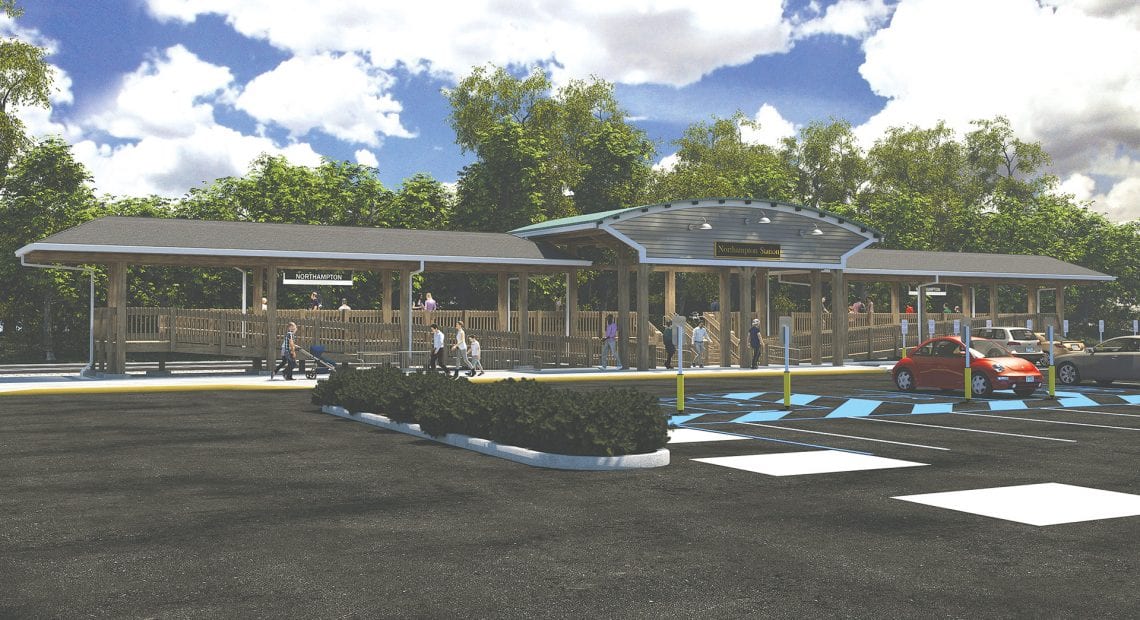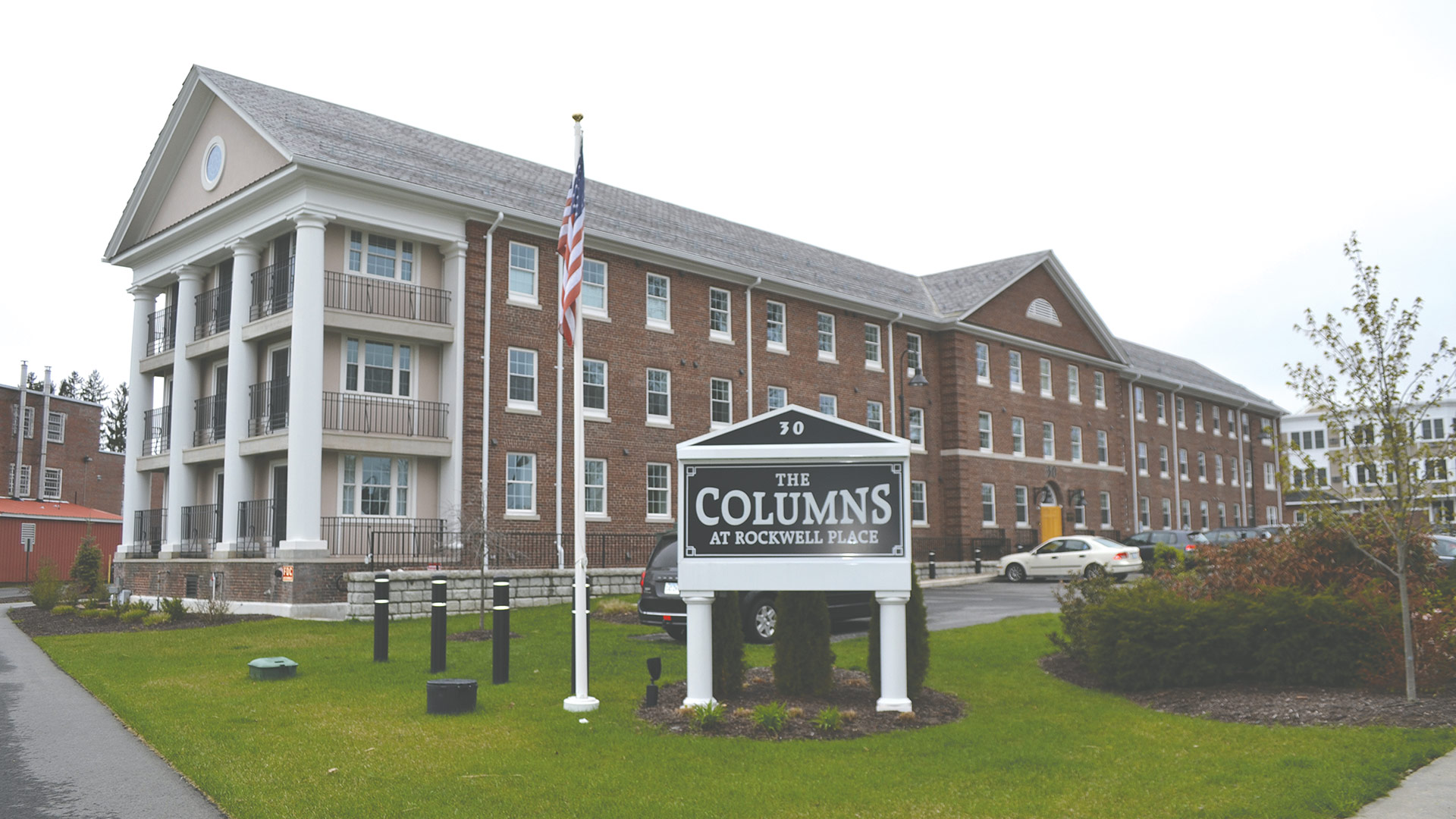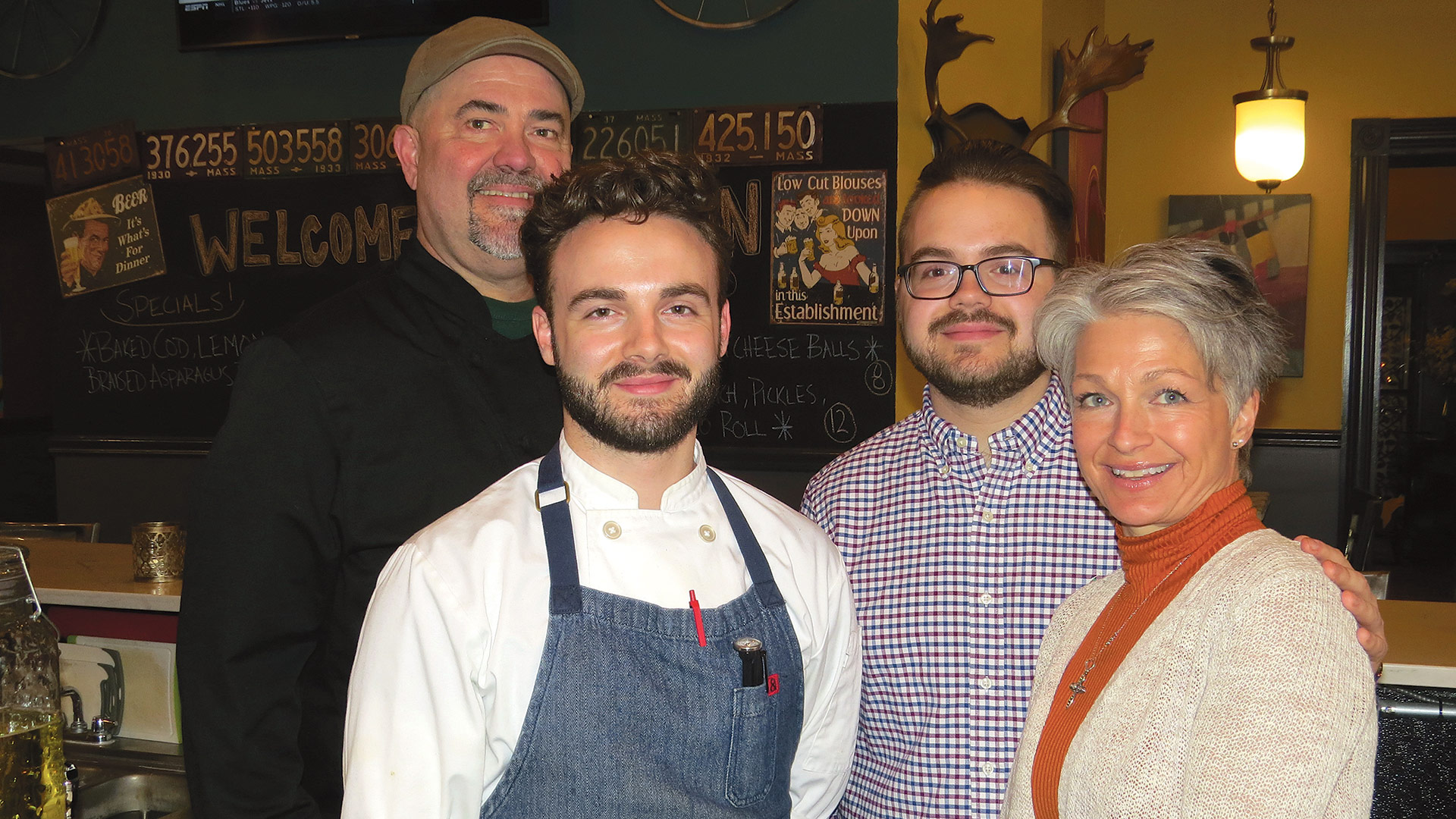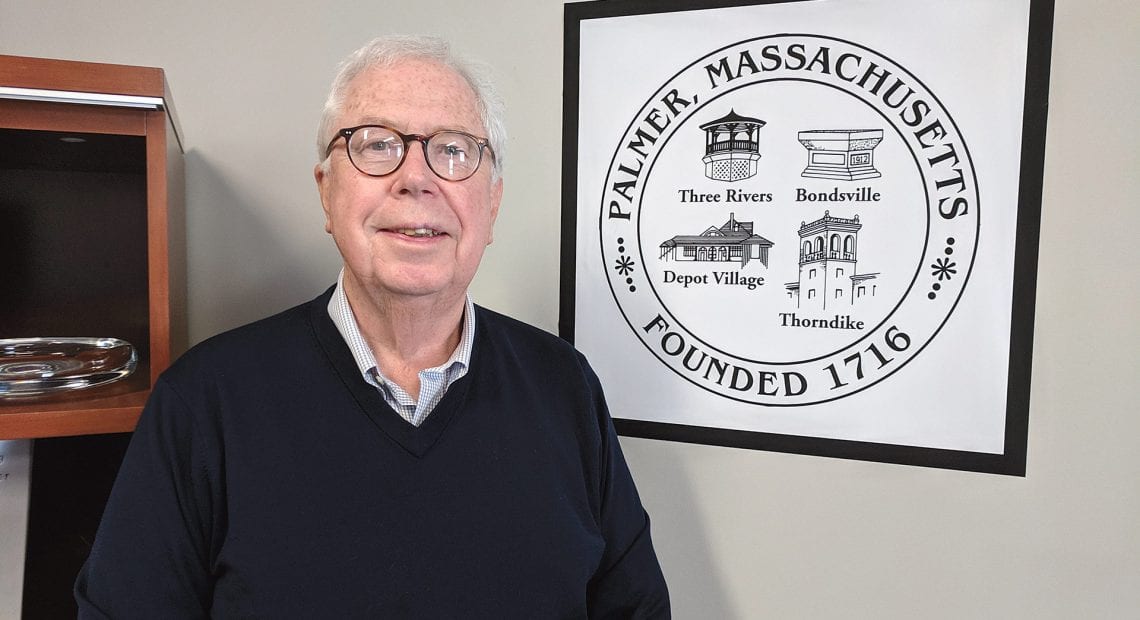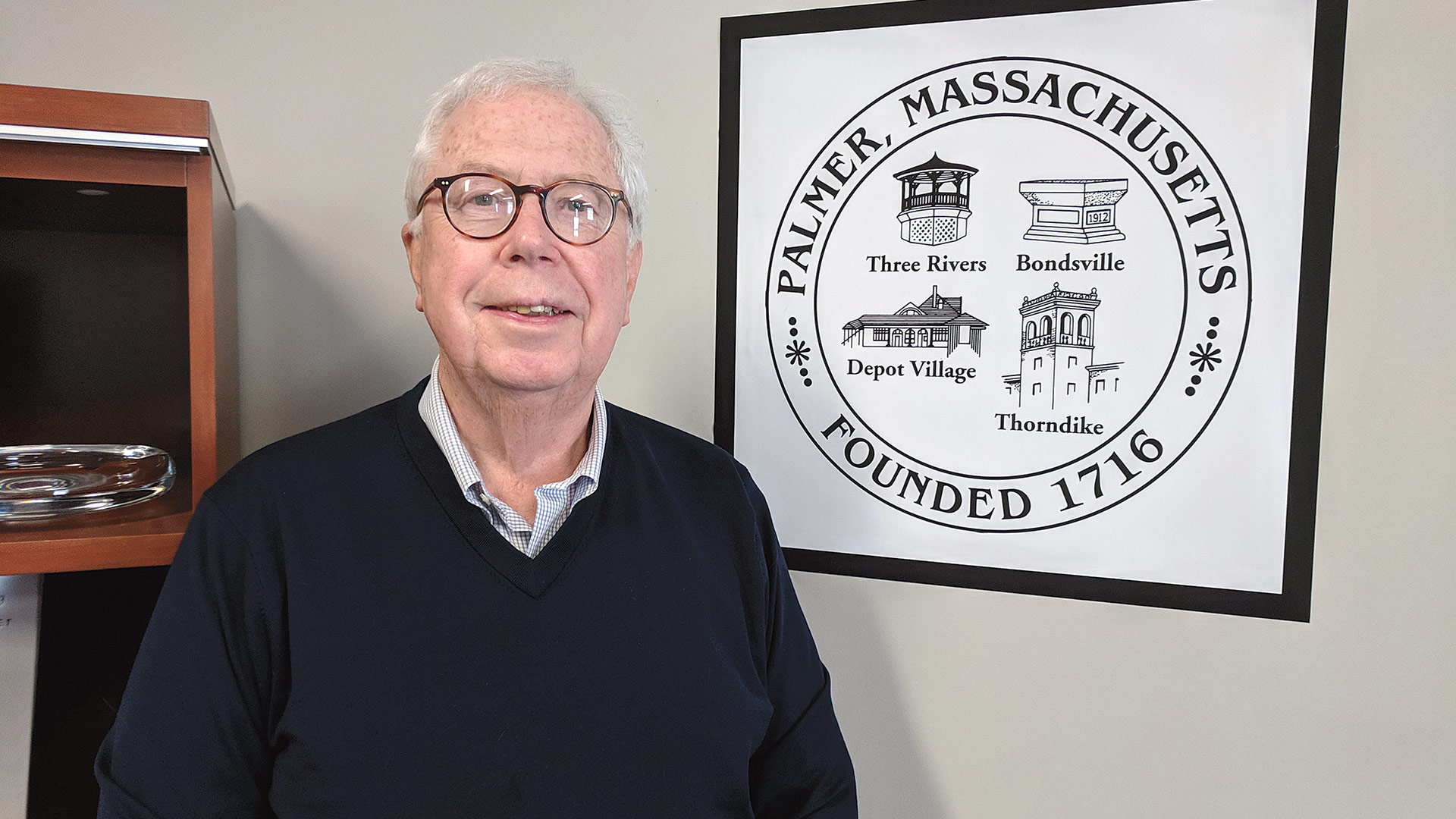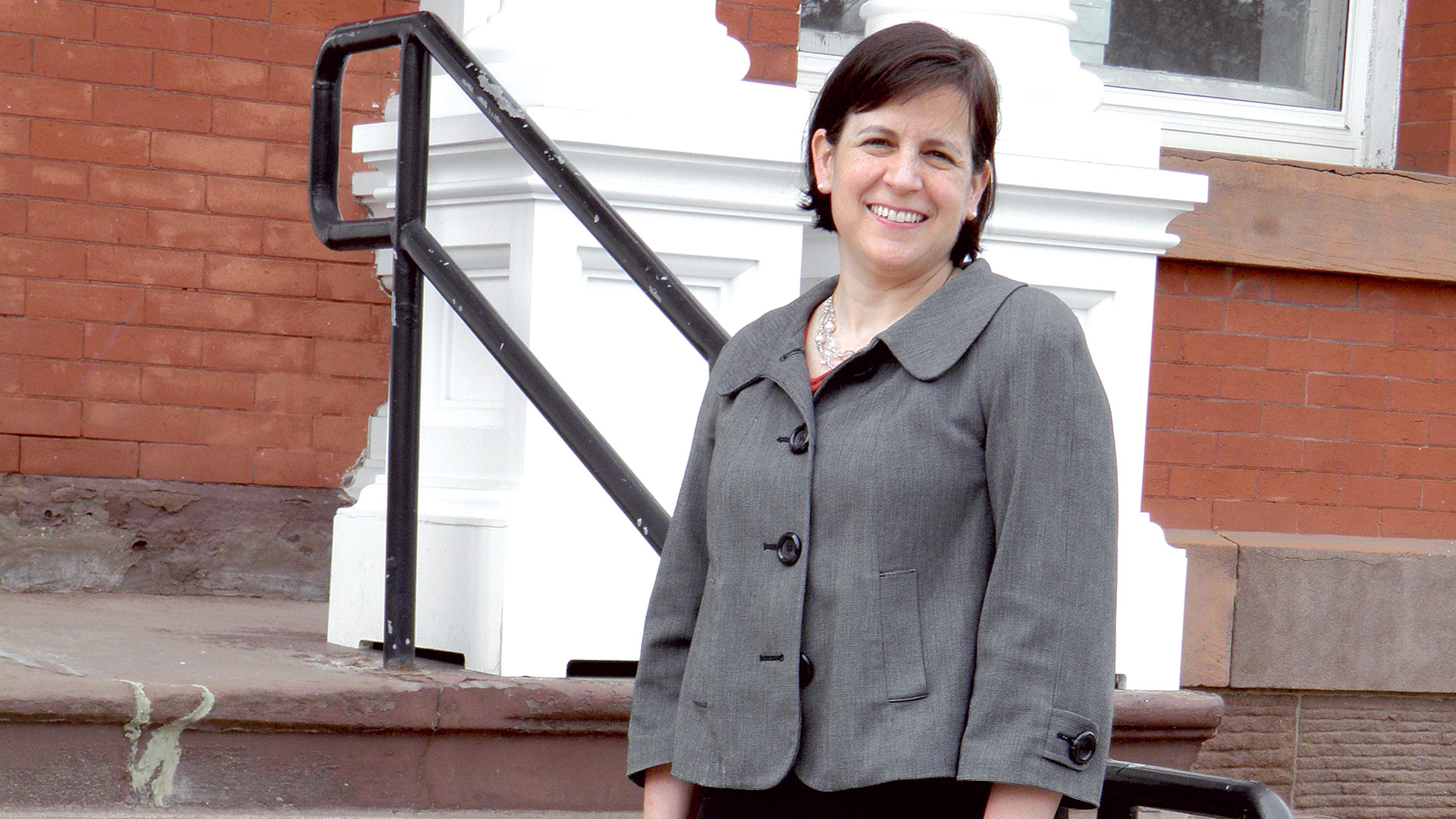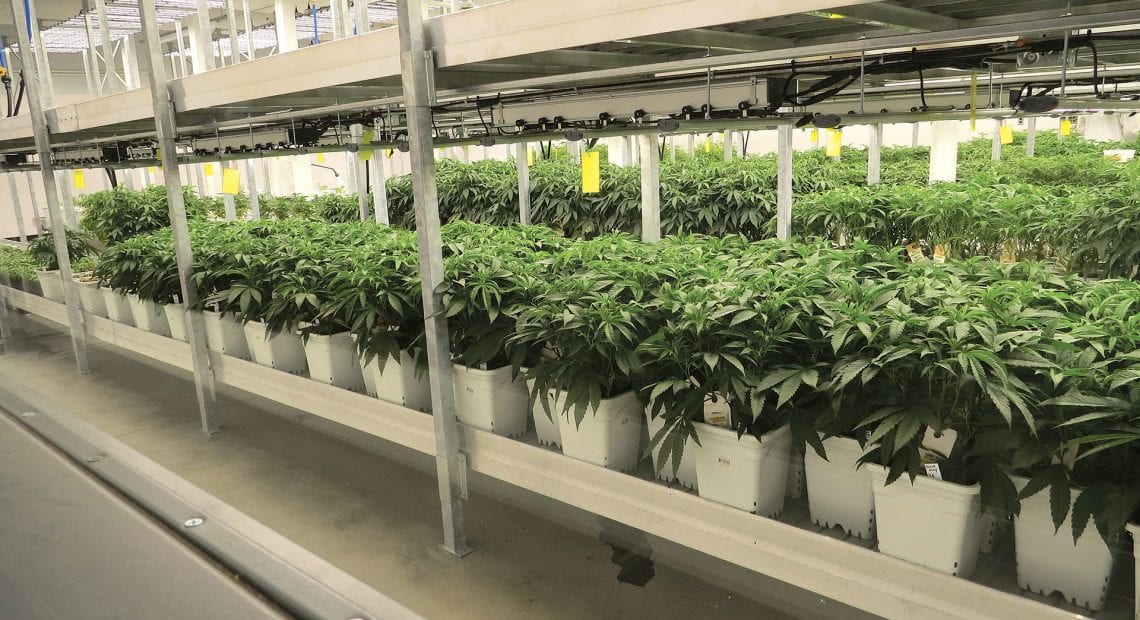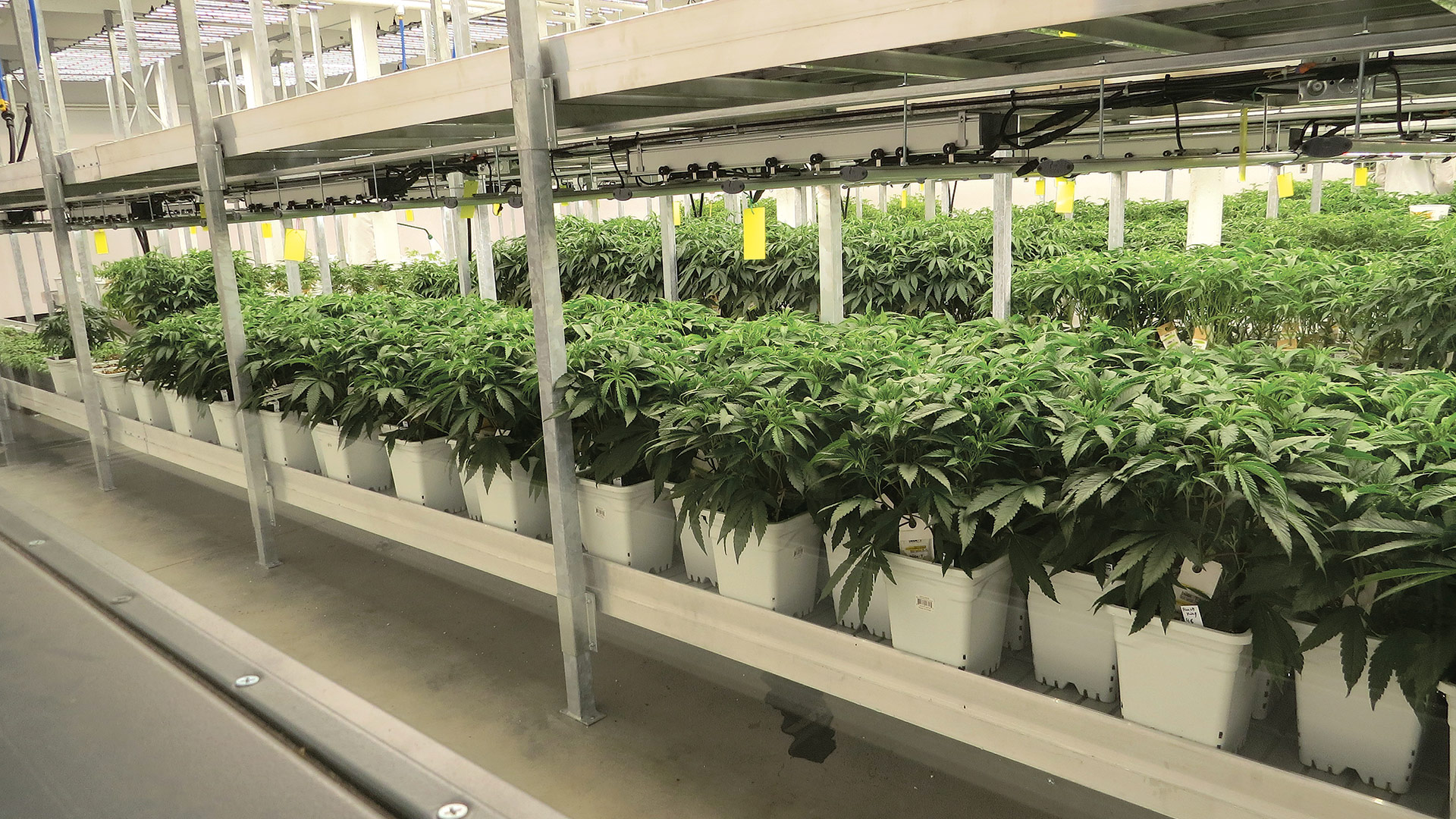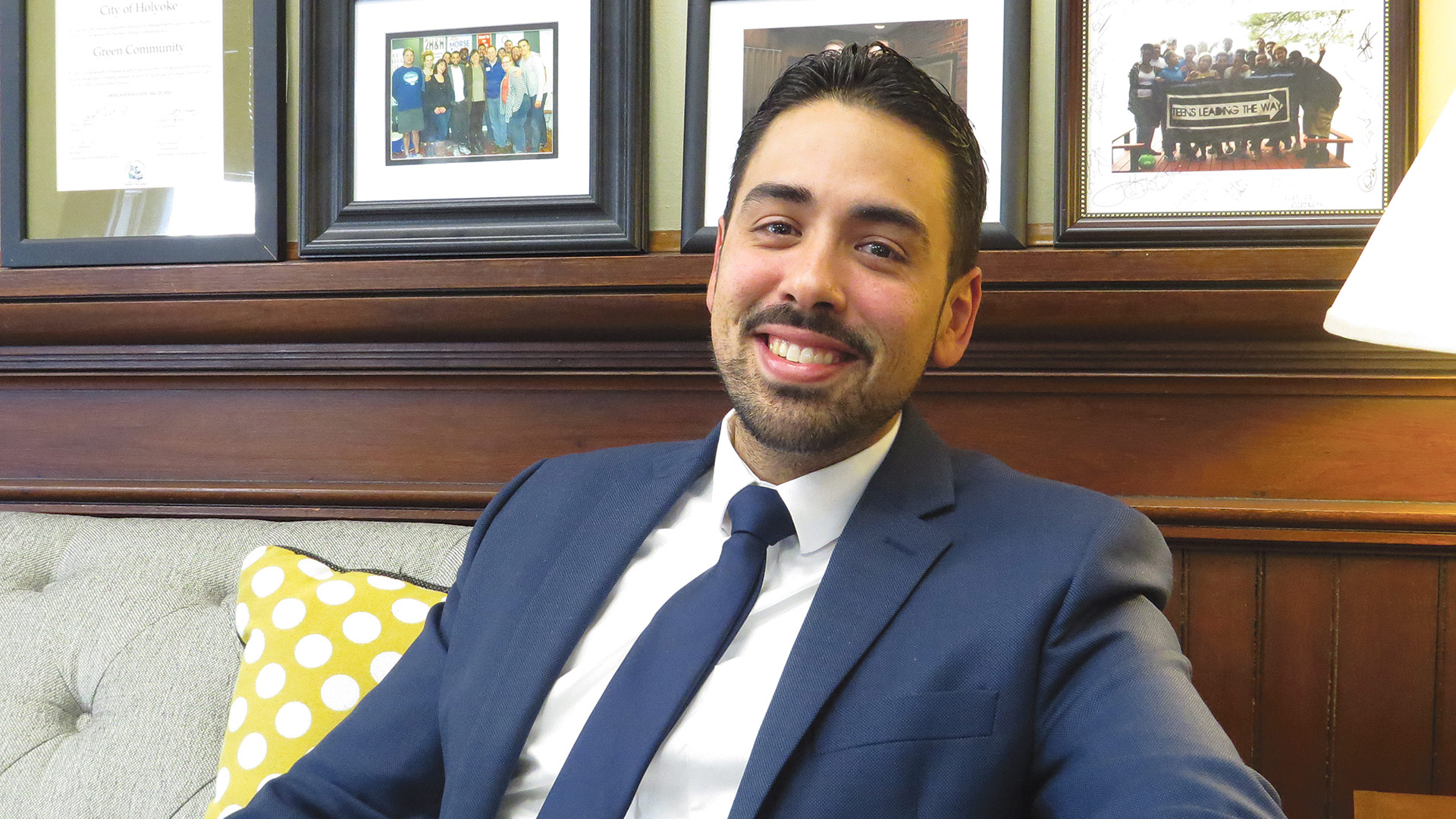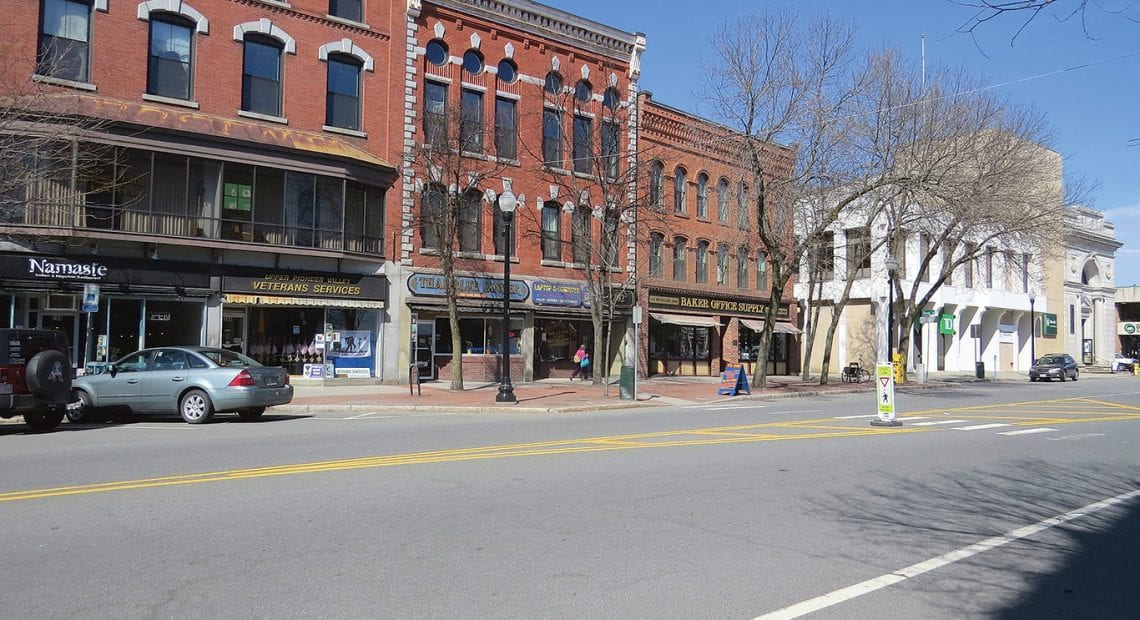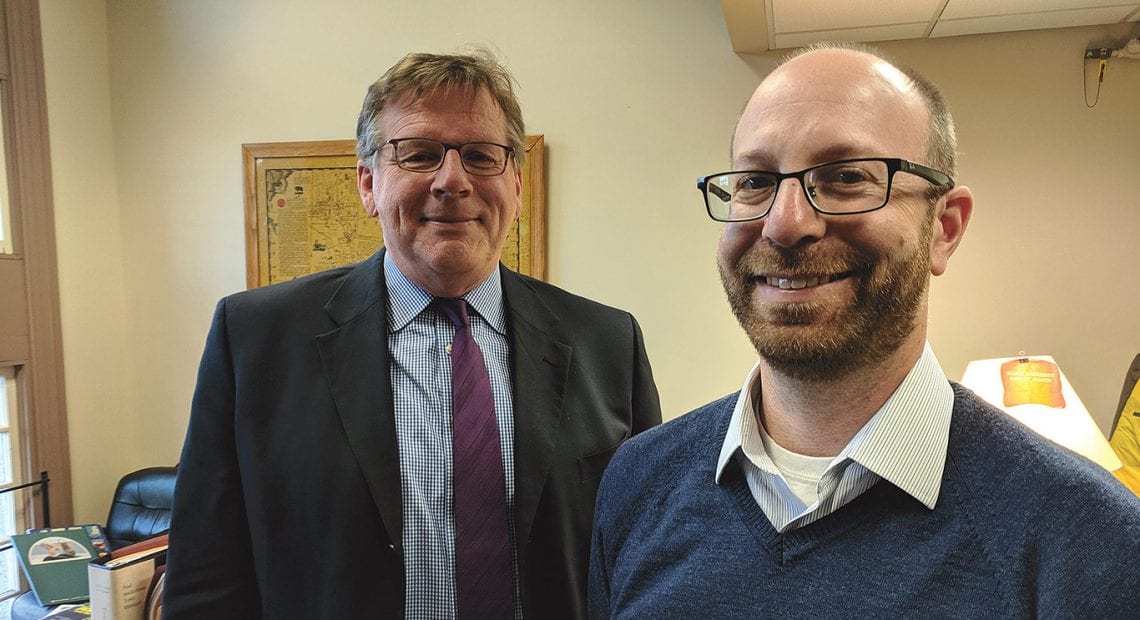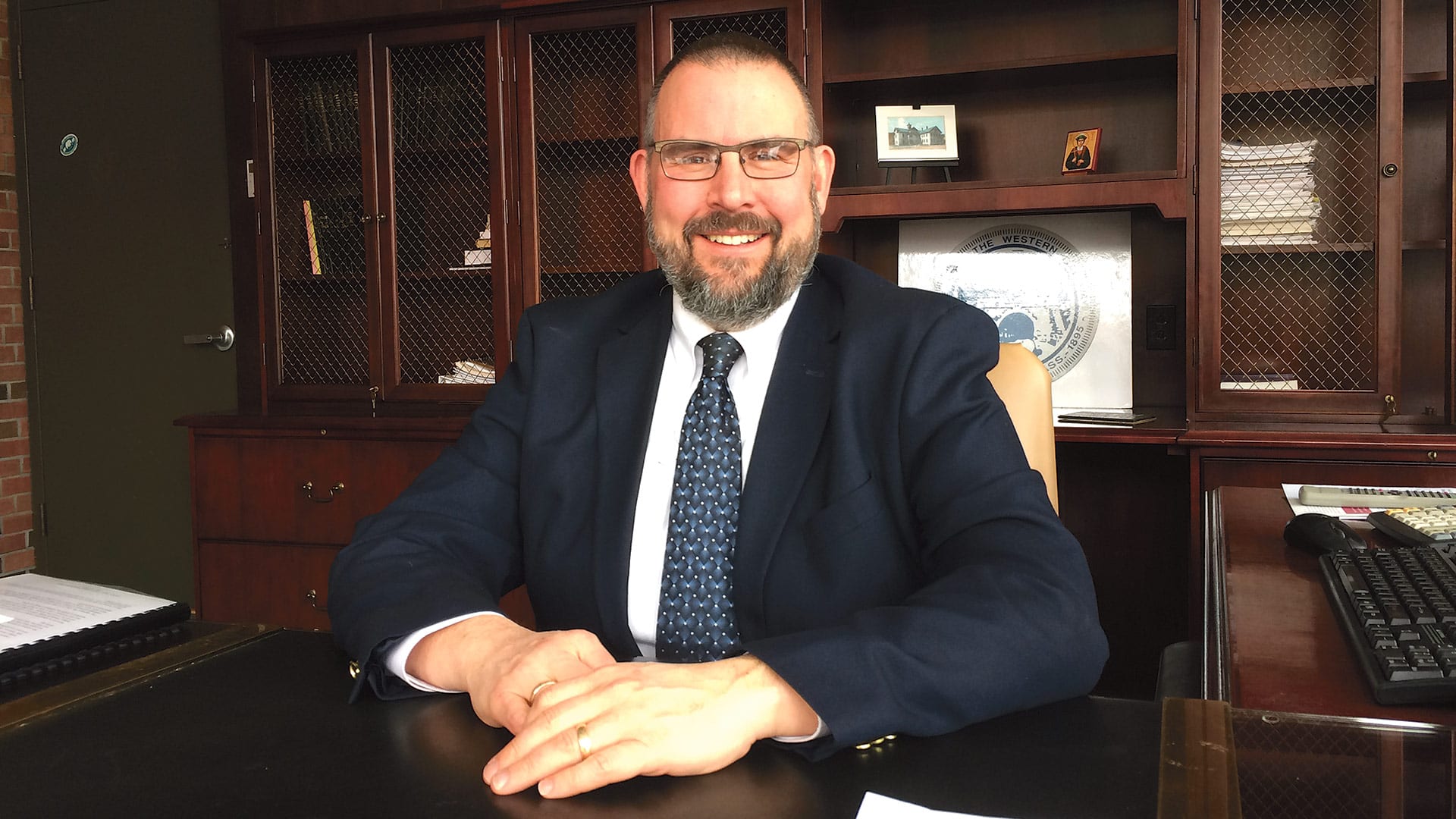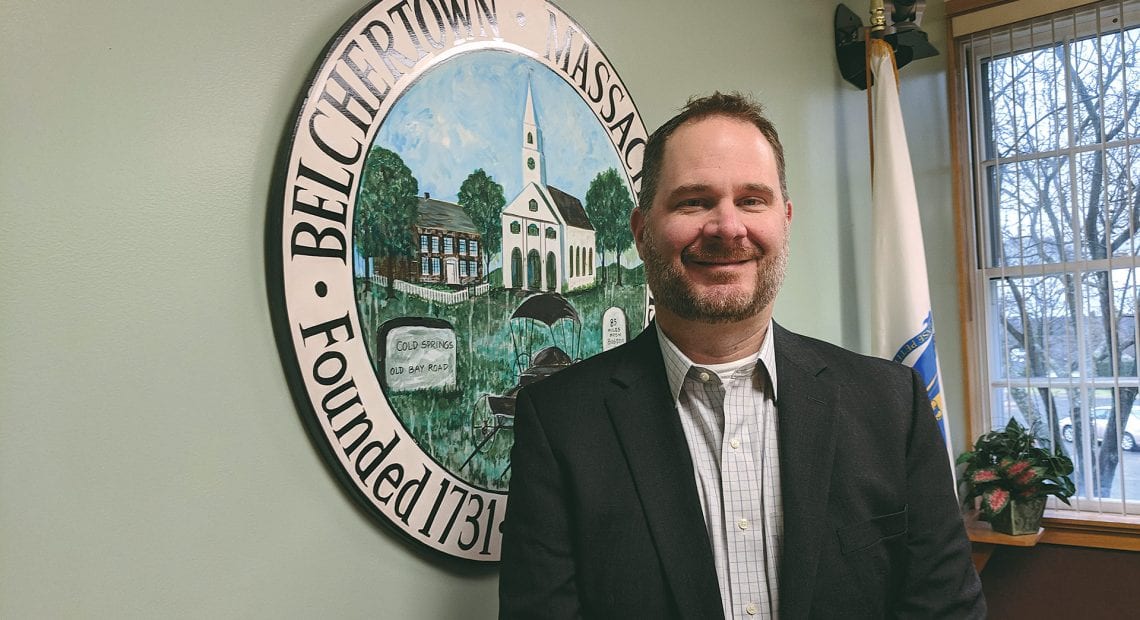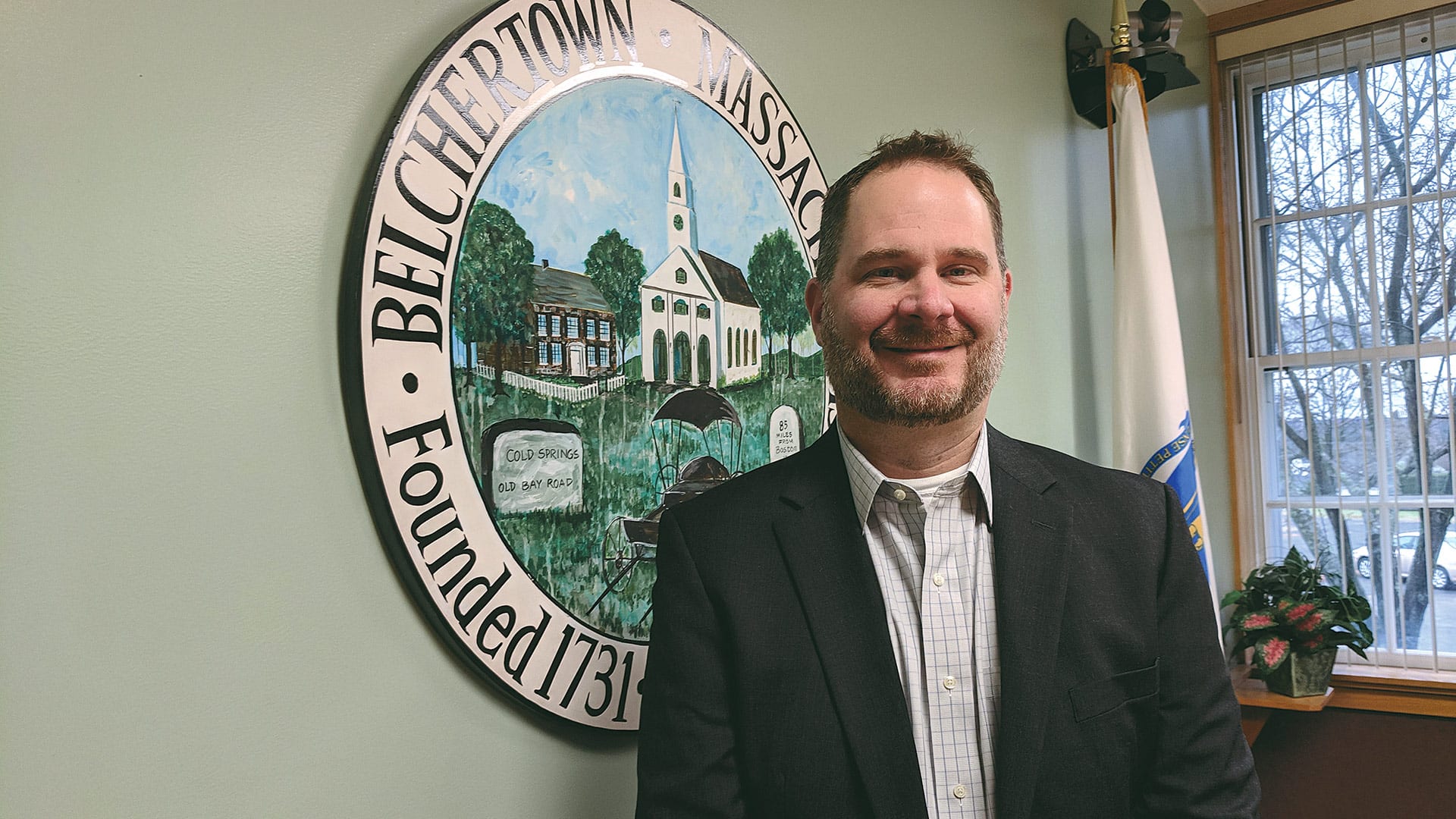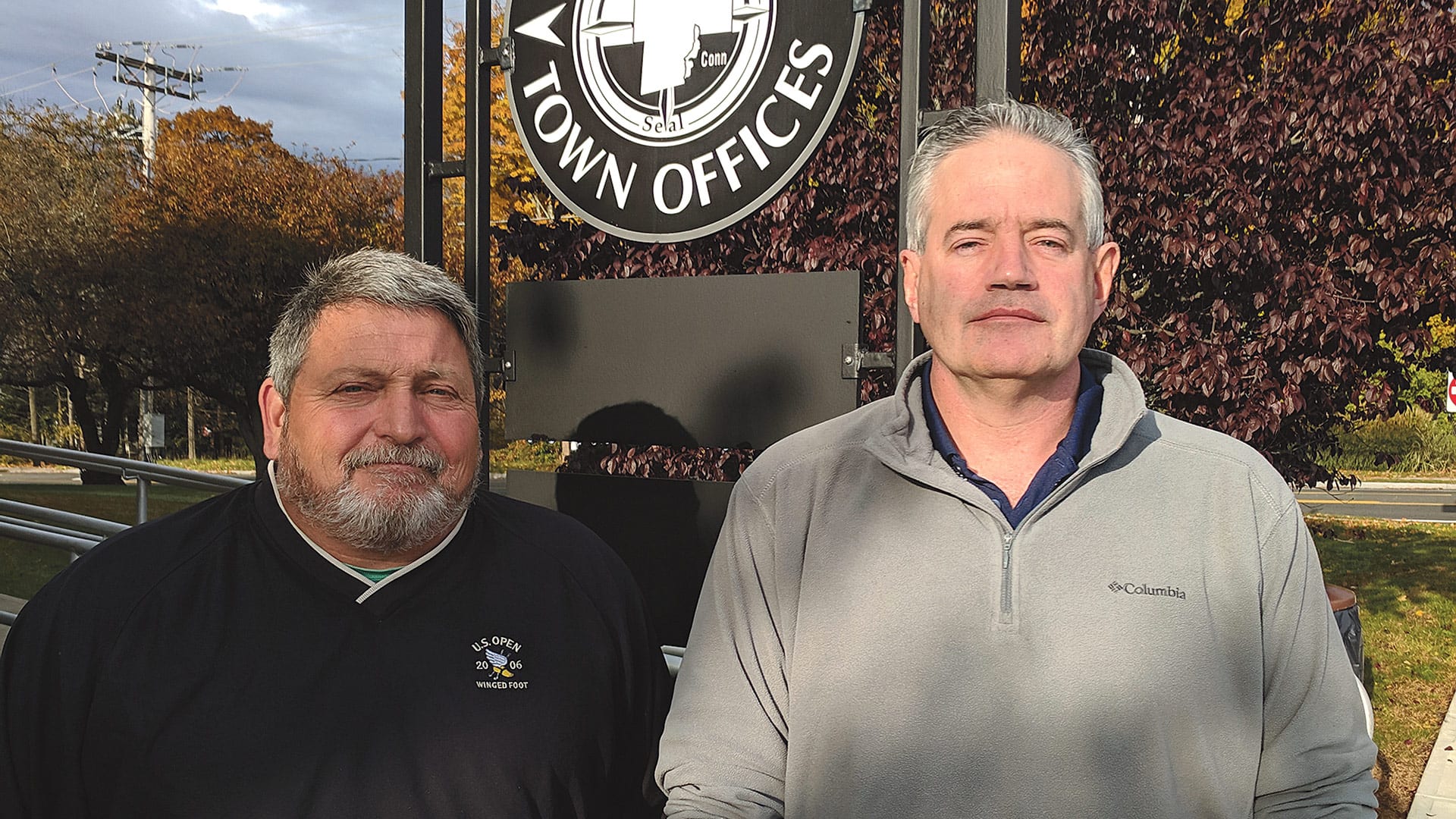Community Spotlight
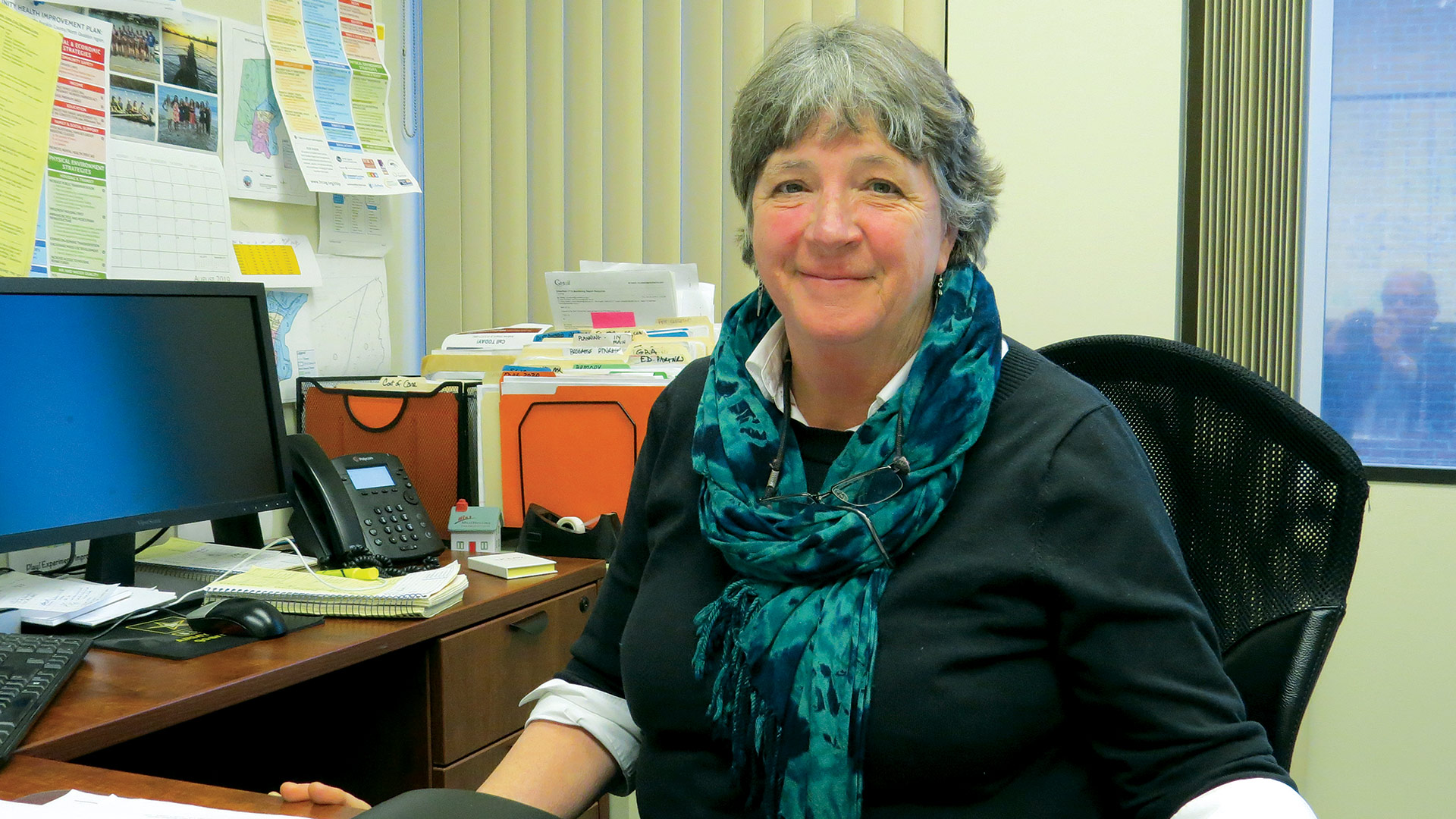
MJ Adams, Greenfield’s director of Communty and Economic Development
Let’s get the bad news out of the way. And it certainly is bad news.
Wilson’s department store, an anchor and destination in downtown Greenfield for a century or so, will be closing its doors as its owner moves into retirement, leaving a very large hole to fill in the middle of Main Street.
The store was practically synonymous with the city and its downtown, drawing visitors of all ages who wanted to shop in one of the last old-time department stores in this region and maybe in the state.
“It’s devastating and it’s heartbreaking because it’s part of the fabric of the community,” said Diana Szynal, executive director of the Franklin County Chamber of Commerce, headquartered on Main Street in Greenfield. “This will be a serious loss for Greenfield, but…”
That ‘but’ constitutes what amounts to the good news.
Indeed, while unquestionably a loss, the closing of Wilson’s — which was certainly not unexpected by most — isn’t producing anything approaching the hand-wringing such news would have generated a decade or even five years ago.
Redevelopment of this large and highly visible site will certainly pose challenges. But instead of focusing on that aspect of the equation, most are consumed by the other side — the opportunity side, which Szynal referenced as she finished her sentence.
“We are looking at this as an opportunity,” she said. “We know something good will go there, something that reflects a changing landscape in retail.”
Meanwhile, there are enough good things happening and enough positive energy in this city that most are thinking this is something Greenfield can deal with and perhaps even benefit from in the long run as the retail world changes.
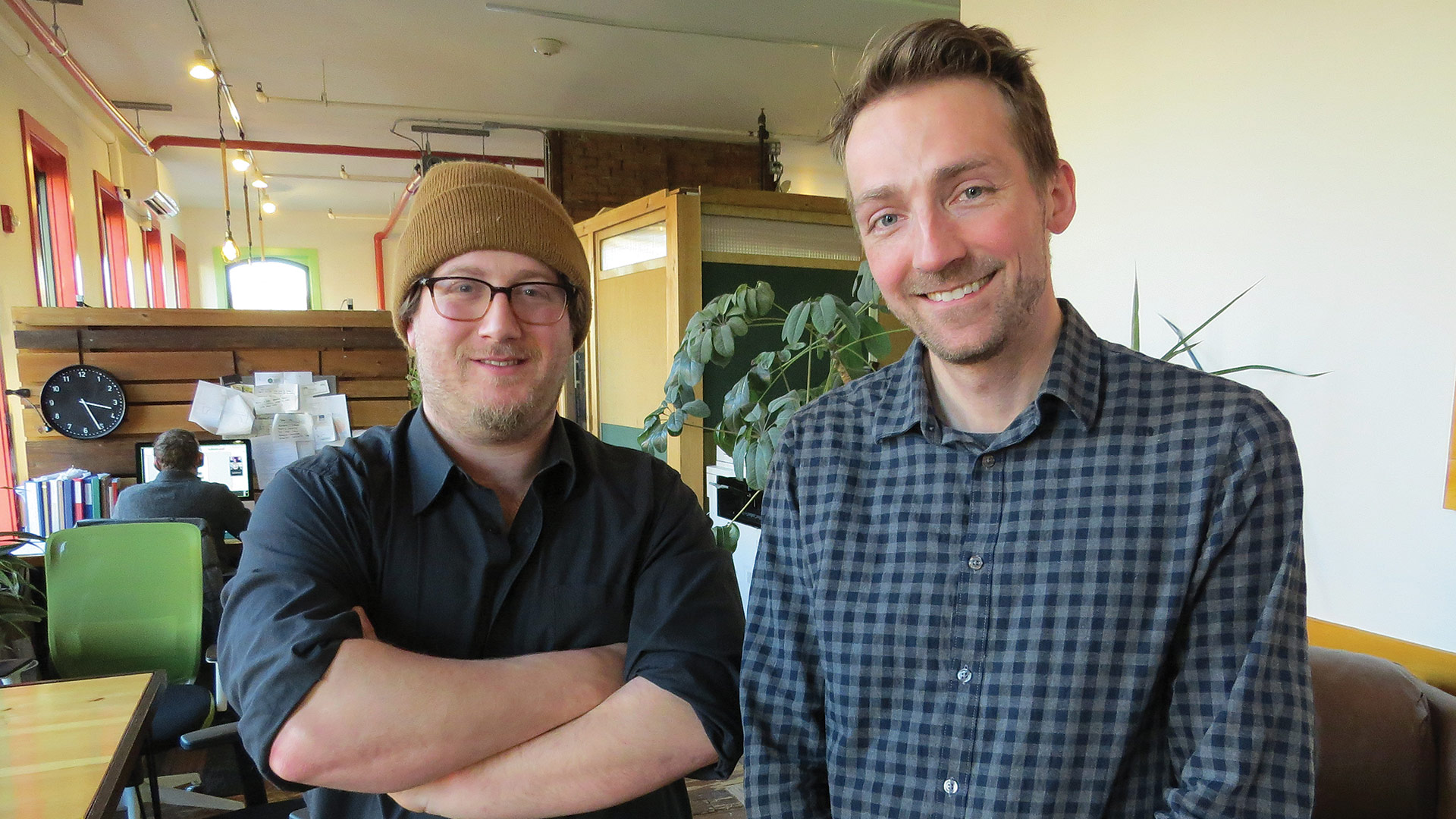
Jeremy Goldsher, left, and Jeff Sauser, co-founders of Greenspace co-working space.
As for those good things and positive energy … it’s a fairly long and impressive list that includes:
• New businesses such as the Rise Above coffee shop, and established businesses under new ownership, such as the Greenfield Garden Cinema, another downtown anchor;
• A refocused Greenfield Business Assoc. (GBA), now under the leadership of coordinator Rachel Roberts;
• A burgeoning cultural economy headlined by the Hawks & Reed Performing Arts Center in the heart of downtown, but also a growing number of arts-related ventures;
• Co-working spaces — such as Greenspace, located above Hawks and Reed, as well as Another Castle, a facility that has attracted a number of video-game-related businesses — that are attracting young professionals and bringing more vibrancy to the downtown;
• GCET, the municipal provider of reliable high-speed internet, a service that that has made those co-work spaces possible;
• The Hive, a makers space now under development on Main Street, just a block or so down from Wilson’s;
• Rail service, specifically in the form of the Yankee Flyer, which brings two trains a day to the city, and enables one to travel to New York and back the same day;
• A new town library, which is expected to bring more vibrancy — and another co-working space — to downtown; and
• A noticeable tightening of the housing market, a tell-tale sign of progress.
“I have some employees who are trying to buy homes in Greenfield, and the inventory is moving so fast, they’re having a hard time getting something,” said Paul Hake, president of HitPoint, a video-game maker and anchor tenant in the Another Castle co-working space. “We have someone who’s trying to buy here from Los Angeles; he’s very excited, but he says, ‘every house I look at is gone by the time I can make an offer.’ The market’s hot, and that’s always good.”

The landscape in downtown Greenfield is changing. Long-time anchor Wilson’s is closing, while new businesses, such as the coffee shop Rise Above, have opened their doors.

These pieces to a large puzzle are coming together and complementing one another, thus creating an attractive picture and intriguing landing spot for entrepreneurs looking for quality of life and an affordable alternative to Boston or Northampton. And they’re also creating momentum that, as noted, will hopefully make the closing of Wilson’s a manageable loss.
“We’re sad to see Wilson’s go,” said William Baker, president of Baker Office Supply, another Main Street staple (pun intended) since the 1930s, and also president of the Greenfield Business Assoc. “But we’re all excited to see what comes next.”
Roberts agreed.
“Downtown is at a crossroads, and we’re working together to see what fits and put the pieces together,” she noted, adding that there is a great deal of collaboration going on as the community hits this fork in the road, an important ingredient in its resurgence. “We support each other, and that’s huge. I’ve lived in plenty of other places where you see isolation and people hitting walls. We don’t hit walls here — we just make a new window and figure out how you’re going to reach across that window to your neighbor and say, ‘how are we going to make this work?’”
For this, the latest installment of its Community Spotlight series, BusinessWest opens a window onto Greenfield, or what could be called a new Greenfield.
Banding Together
Jeremy Goldsher was born in Greenfield and grew up in nearby Conway. Like many other young people, he moved on from Franklin County to find opportunity, but unlike most, he returned to his roots — and found it there, in a number of different ways.
Indeed, he’s now at the forefront of a number of the initiatives creating momentum in Greenfield. He and Jeff Sauser co-founded Greenspace, which bills itself as “flexible, on-demand co-working space in the heart of downtown,” and is part of the ownership team at Hawks and Reed, which is drawing people from across the region, and well beyond, with a diverse lineup of shows, ranging from open-mic night on Jan. 7 to Bombtrack, a Rage Against the Machine tribute, on Jan. 10.
He’s also on a host of committees, including the Downtown Greenfield Neighborhood Assoc. and the GBA, and was active in the push for a new library.
He told BusinessWest there is considerable positive energy in the city, generated by a host of factors, but especially a burgeoning cultural economy, a growing number of young entrepreneurs finding their way to the city (thanks to fast, reliable internet service), and a downtown that is becoming ever more attractive to the younger generations.
What’s made it all possible, he noted, is a spirit of collaboration and a number of groups working together.
“It really does a take a village,” he said. “It’s such a blessed time to be a part of this community; there’s a wave of construction and development happening, and it’s just exciting to be part of it.”
MJ Adams, director of Community and Economic Development for Greenfield, agreed. She told BusinessWest that, as a new year and a new mayoral administration — Roxann Wedegartner was elected last November — begins, a number of initiatives launched over the past several years are starting to generate progress and vibrancy.
These include everything from the new courthouse, transportation center, and parking garage in the downtown to GCET’s expanding footprint; from Greenfield Community College’s growing presence downtown — and across the city, for that matter — to redevelopment of the former Lunt Silversmith property into a healthcare campus.
“The city conducted a master-planning process about five years ago that really engaged the community in a robust conversation of what we saw as our future,” Adams explained. “As we come up on the five-year anniversary of that initiative, the community is talking about focusing more specifically on the downtown and downtown revitalization.
“We’ve seen a major shift in how our downtown plays itself out,” she went on. “And I think we’re trying to figure out what role the city should be playing and what’s the role of the various partners in the community as we try to continue moving forward and seeing Greenfield become the robust, vibrant arts and cultural hub of Franklin County.”
There are a number of these partners, starting with GCC, the only college in Franklin County. The school has long had a presence in the downtown, and is working to become more impactful in areas ranging from workforce development to entrepreneurship, said Mary Ellen Fydenkevez, chief Academic and Student Affairs officer.
As examples, she said the college, which is in the midst of its own strategic-planning process, has launched a creative-economy initiative in collaboration with retired Congressman John Olver; put together a ‘Take the Floor’ event, a pitch contest with a $10,000 first prize; and blueprinted a new ideation center to be created in the East Building within the school’s main campus.
“There, we hope to bring together all different kinds of entrepreneurs to work together in a working space,” she explained, adding that the college plans to stage workshops on various aspects of entrepreneurship to help fledgling businesses develop.
Meanwhile, it plans to start a new business of its own, a coffee shop to be managed by student interns.
“One of our focal points is experiential learning,” she told BusinessWest. “And this business will provide that — it will give students opportunities to learn while doing; they’ll be running their own business.”
Meanwhile, on the academic side, the college is looking at new programs to support workforce-building initiatives in healthcare precision manufacturing and other sectors, and it is also blazing a trail, if you will, with a new program in adventure education.
Indeed, the school recently received approval from the state Department of Higher Education for an associate-degree program to focus on preparing individuals to lead businesses in the outdoor-adventure sector, which includes ziplining, rafting, and more.
“We feel that Western Mass. is a great place for such a program,” Fydenkevez said. “And we’re optimistic that we’ll get some good response; this is an important part of the economy here.”
Art of the Matter
The same can be said of the broad arts and entertainment sector that has emerged over the past several years, said Rachel Katz, owner of the Greenfield Gallery, billed as the city’s premier (and also its only) art gallery, and president of the Crossroads Cultural District.
“I’m a big believer in the creative economy driving growth, especially after an industrial exodus, as we’ve seen in so many small New England towns — it’s a model we’ve seen repeated all through the country,” said Katz, who converted the former Rooney’s department store in 2015 with the intention of creating a gallery and leading the way in a creative-economy revival.
“I saw when I came here that there were already a lot of creative people here doing some amazing things,” Katz went on. “There just wasn’t a home for them; I created a home.”
Since then, the arts and music sector, if you will, has continued to grow, said Katz, who believes it is leading the revival now taking place. And another major piece to the puzzle with be added with the Hive makers space.
Like other facilities of this type taking shape in other communities, The Hive will be a membership-based community workshop with tools and equipment — from computer-controlled precision machining equipment to 3D printers to traditional sewing machines — made available to these members.
“This space is critical,” Katz said, “because it provides a bridge between the creative economy and the more traditional technological economy. And the one resource we still have — it’s never gone away despite the closing of all the tap-and-die shops — is the people that are here.

Jeremy Goldsher at Hawks & Reed Performing Arts Center, the anchor of a growing cultural economy in Greenfield.
“Those people still have skills and ideas; they just don’t have a place to actualize them,” she went on. “The Hive will give these people an outlet, and when you put tools in the hands of people with ideas, only good things can happen.”
Good things also happen when you can give people with ideas reliable, high-speed internet and attractive spaces in which to work, said Sauser, Goldsher’s partner at Greenspace and an urban-planning consultant by trade.
He told BusinessWest that the Greenspace model is to take obsolete or underutilized space and “make it cool again.” He and Goldsher have done this above Hawks and Reed and across the street at 278 Main Street, and they’re currently scouting other locations in which to expand.
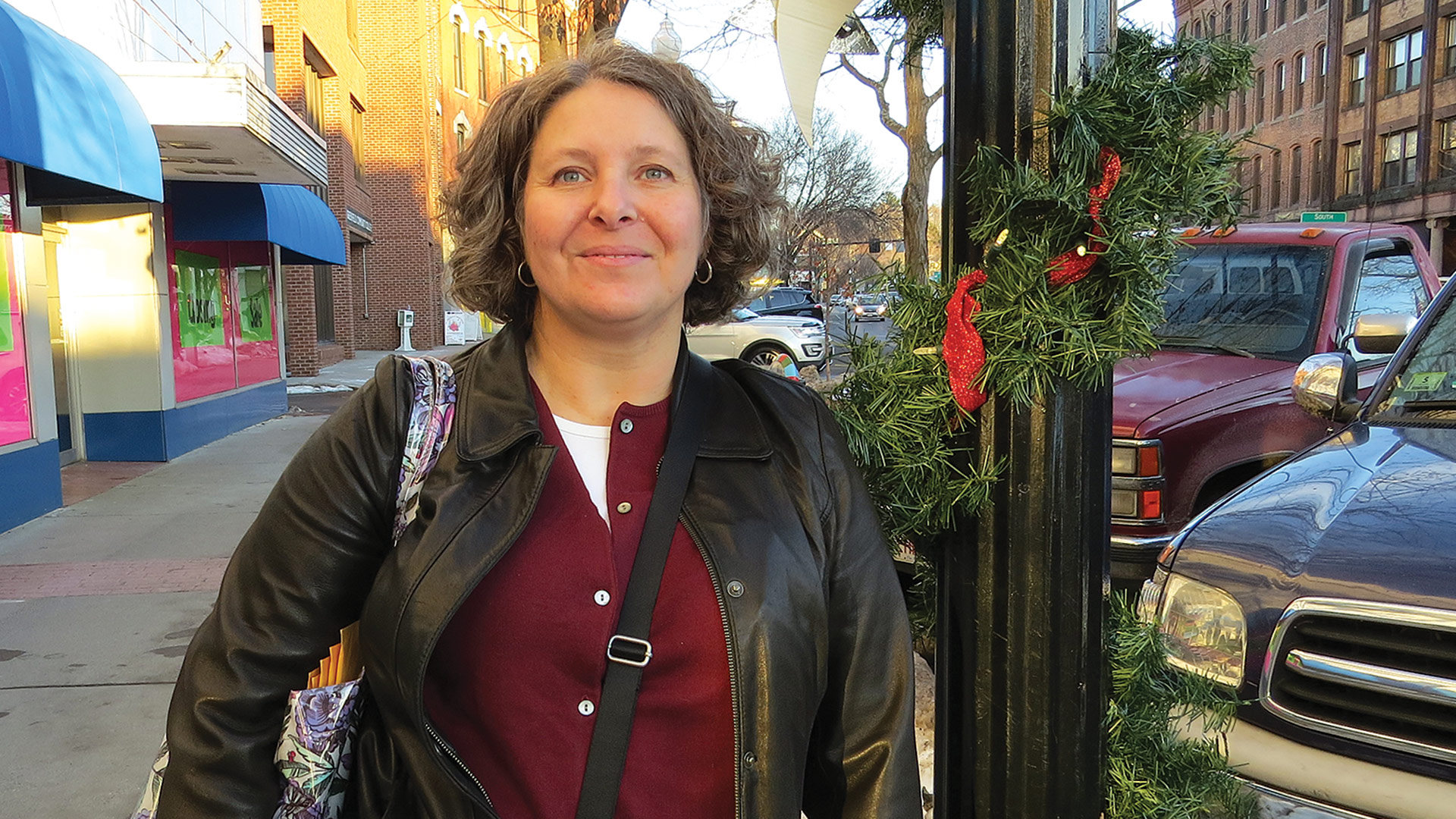
Rachel Roberts, coordinator of a revitalized Greenfield Business Assoc.
Their spaces have become home to a diverse membership base, he said, one that includes an anchor tenant, smaller businesses, and individuals. Above Hawks and Reed, the anchor tenant is Australis Aquaculture, a producer and marketer of farm-raised barramundi — with the farm in Vietnam.
“They wanted to move their executive and sales teams from Montague to downtown Greenfield, in part to retain staff, keep people happy, and have people enjoy coming to work — many of their employees now walk to work,” Sauser explained, adding that the other anchor, Common Media, a digital-marketing company, was based on Route 9 in a building people didn’t enjoy coming to.
Both moves speak volumes about Greenfield’s revitalization, he went on, adding that both companies have lower overhead then they had before, and their employees are happier, both strong selling points.
“My observation, and my personal experience, is that Greenfield is great at attracting people who are looking for a certain quality of life and sense of community — and can work wherever they want,” he noted. “And there’s more and more people like that in this world.”
Creating a Buzz
All those we spoke with said that easily the best thing Greenfield has going for it at present is a spirit of collaboration, a number of parties, public and private, working together to forge a new, stronger, and more diverse economy.
This collaborative spirit is being celebrated — sort of — in another intriguing initiative certain to bring more color to the downtown. It’s the latest in a region-wide series of public art-installation projects, initiatives that brought dozens of painted sneakers to Springfield, bears to Easthampton, terriers to West Springfield, and C5As to Chicopee.
Greenfield will soon be populated with giant bees, said Sarah Kanaby, board president of Progress Partnership Inc.
“These bees are a symbol of the collective energy and the buzz — there have been 5 million bee puns to come out of this project — that we’re seeing in Greenfield,” she explained, noting that artists are painting and decorating the bees now, and they are scheduled to be installed in May or June. “We strongly believe, because of Greenfield’s connection to the modern beehive and all that the beehive represents in terms of collectivism and cooperation, that this is the right image.”
Roberts agreed, noting that a revitalized GBA is one of those groups working with other public and private entities to bring more vibrancy to the downtown and the city as a whole.
“We’re trying to work more collaboratively with the town government to create more things to benefit businesses here in Greenfield as well as the greater community,” she said, adding that one example of this is the addition of new holiday lights on the town common and other holiday-season touches throughout the downtown.
“We’re focusing on taking what we’ve already done and making those programs better, and also finding new ways to support the businesses as well as the community,” she said, adding that, while much attention is directed toward new businesses and attracting still more ventures, her agency doesn’t want to look past long-standing anchors, both small and large, that are still a big part of the picture.
Efforts toward securing not only a new library but also a new fire station are part of this work, she said, adding both facilities are desperately needed, and both with contribute toward quality of life and a greater sense of pride in the community.
Baker, the third-generation owner of the family business, one that has been on Main Street since 1936, agreed, and noted that the GBA has given a voice to a business community that historically hasn’t had one, and at a time when its voice is needed.
“The downtown is re-inventing itself right now; we’re in the midst of trying to figure out what a downtown should be in this new day and age,” he told BusinessWest. “And in talking to people, I think we’re on the right track; there are a lot of great new ideas. We just have to continue with the creative economy, the co-work space, the fantastic internet service that we have, and draw people downtown as we try to figure out the next chapter and what a downtown should look like.”
What’s in Store?
This brings us back to the elephant in the room — the closing of Wilson’s and the huge void it will leave downtown — and where we started this discussion.
Yes, this development is a blow to the city and the end of the area in a number of ways. But this is a new era Greenfield and a different time.
Specifically, it’s a time of collaboration and working together to create new and different kinds of opportunities and new uses for existing spaces.
“Wilson’s was an anchor for this downtown for the longest time, for 137 years,” Adams said. “But it’s exciting to think about what’s next; we’re about to turn the page and see what’s next.”
As Roberts said, those working within this collaborative don’t hit walls, they create new windows. And the view from those windows is very promising.
George O’Brien can be reached at [email protected]




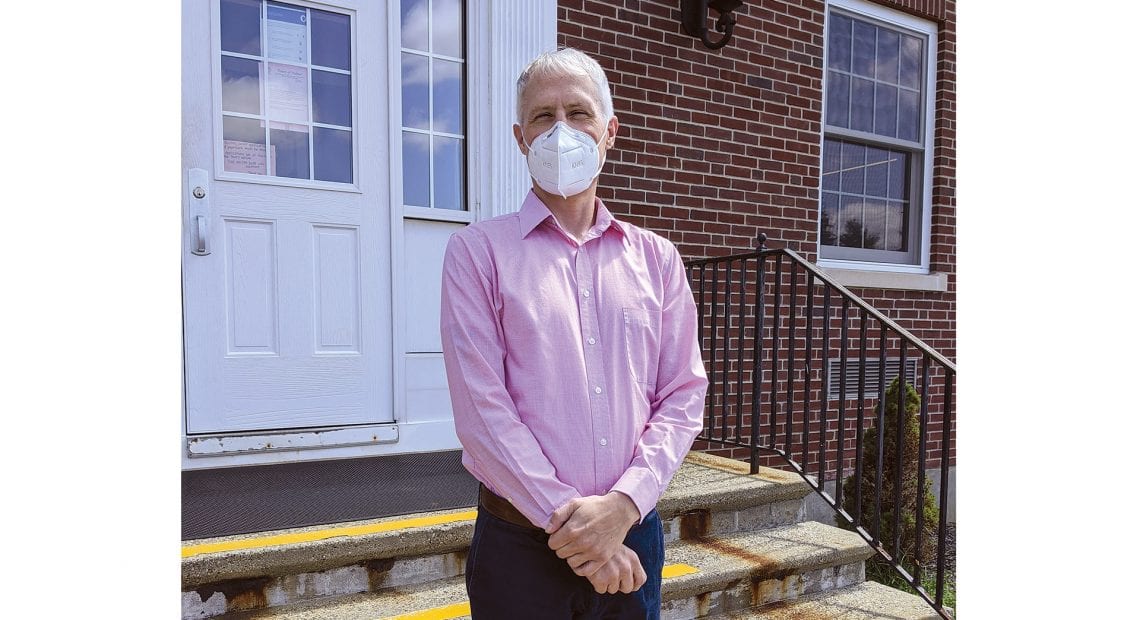






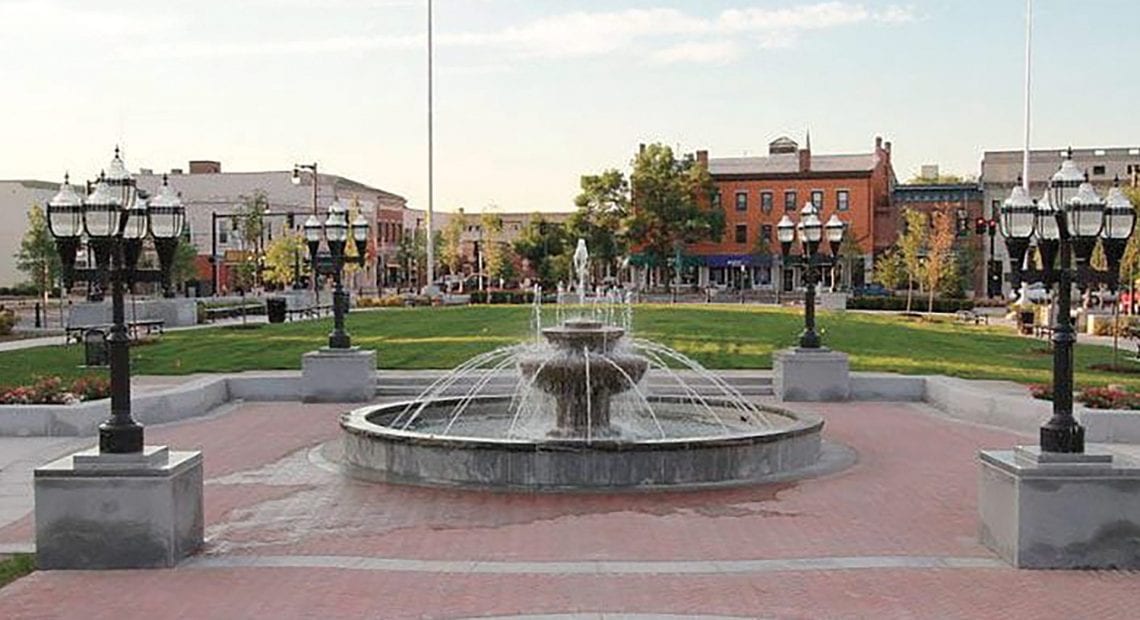





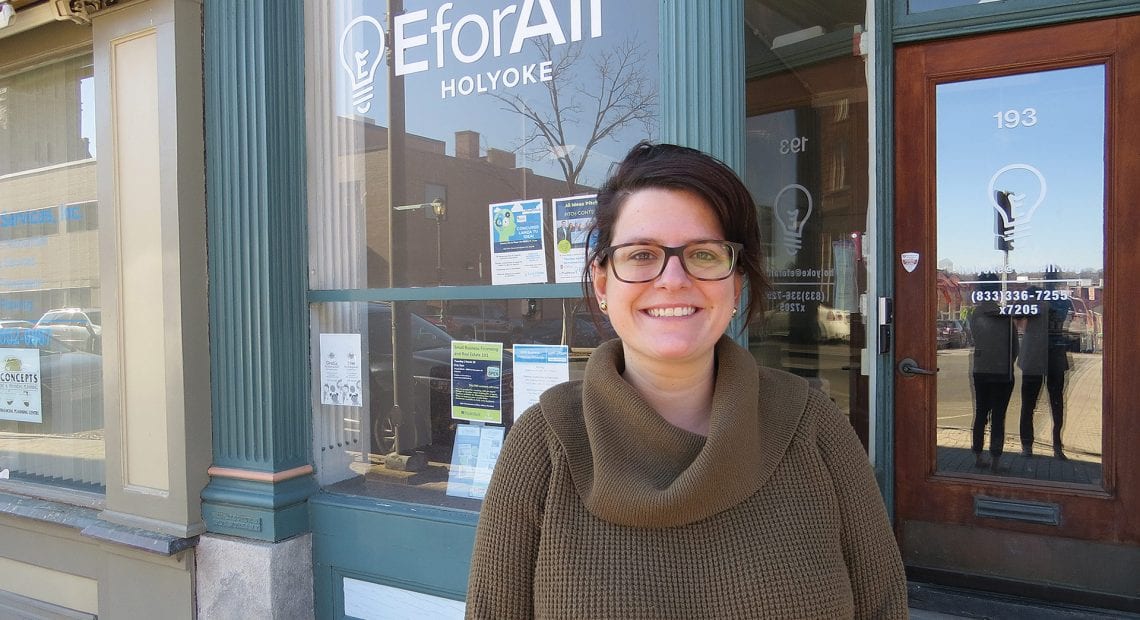
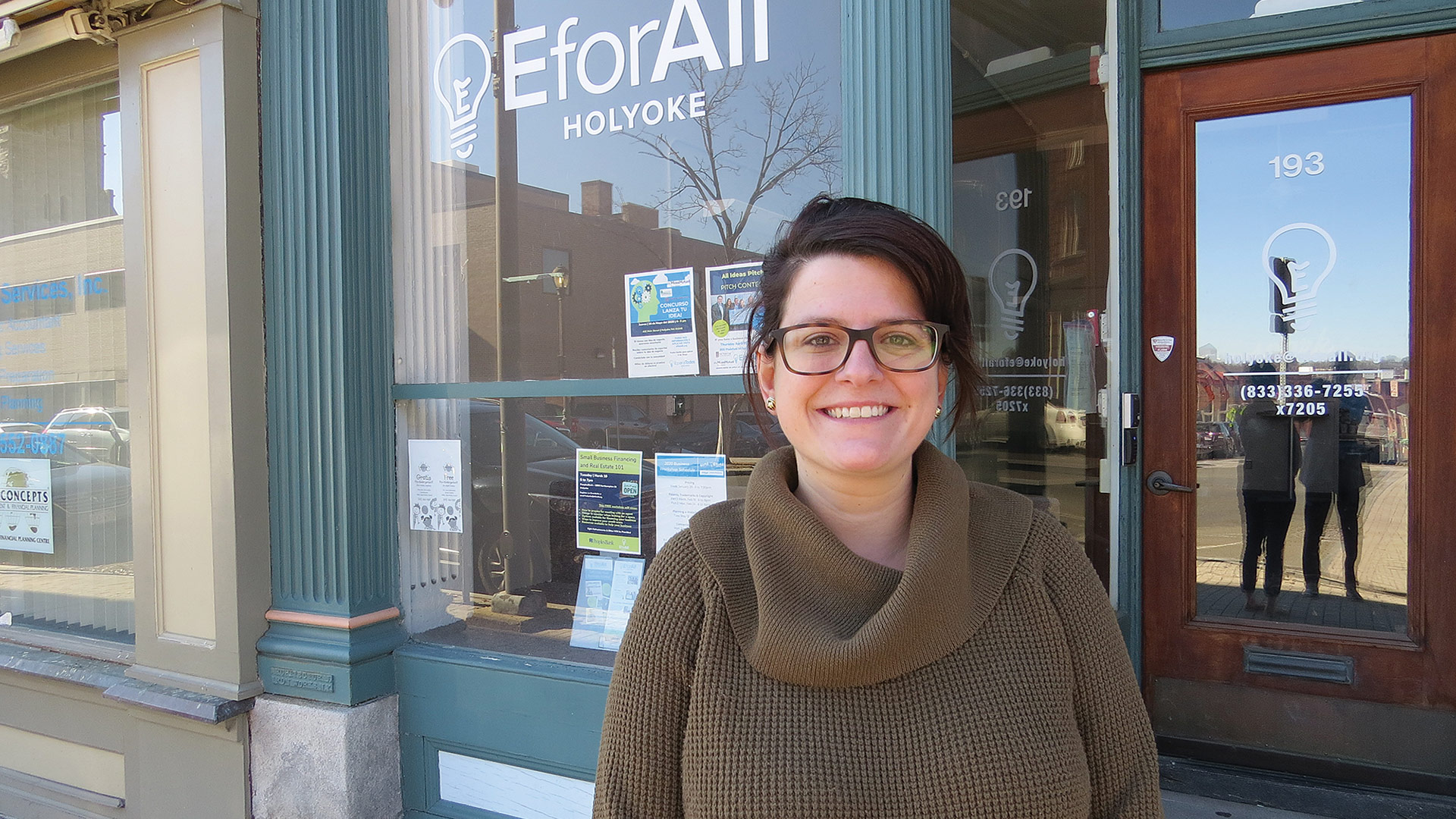




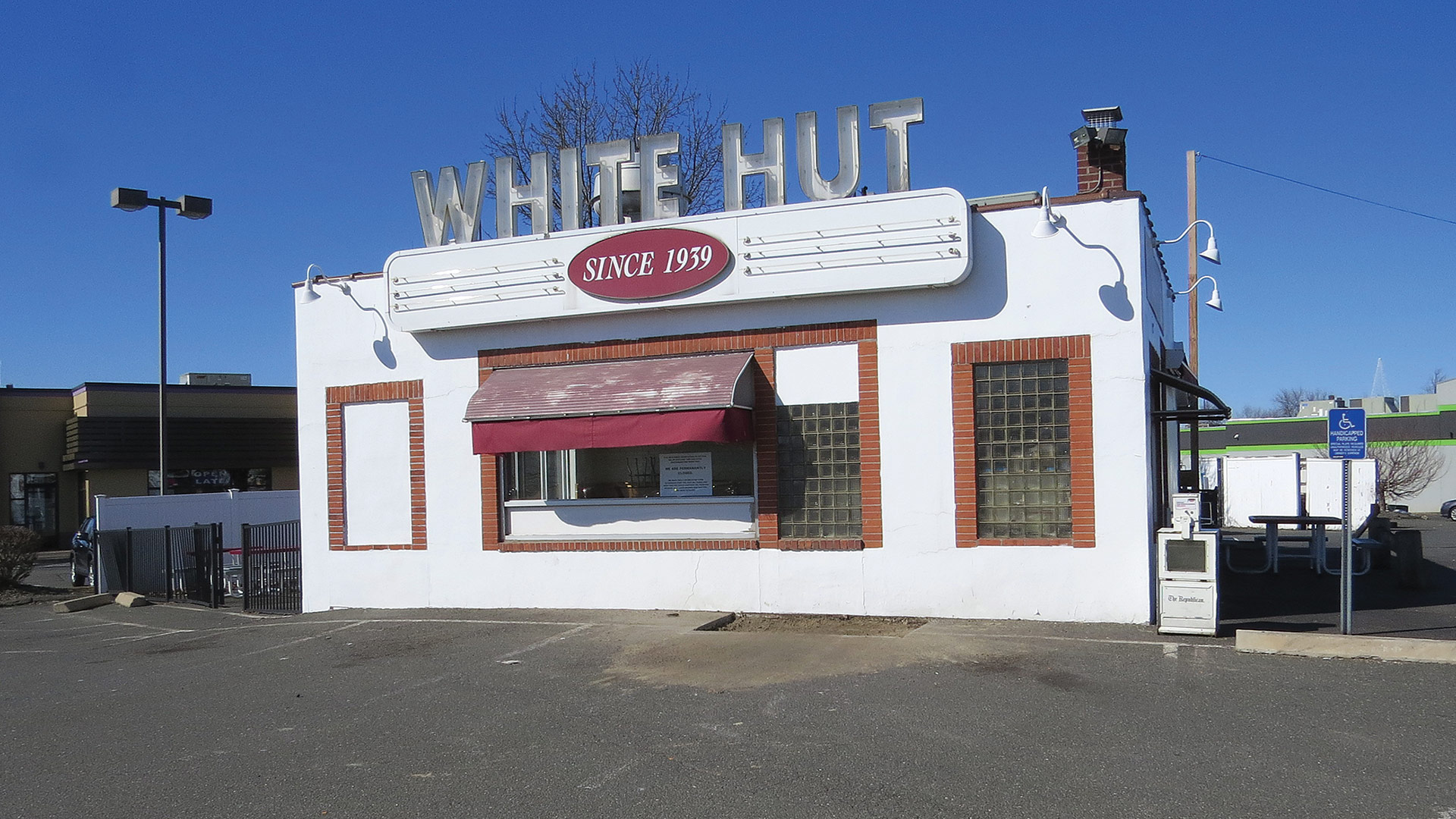

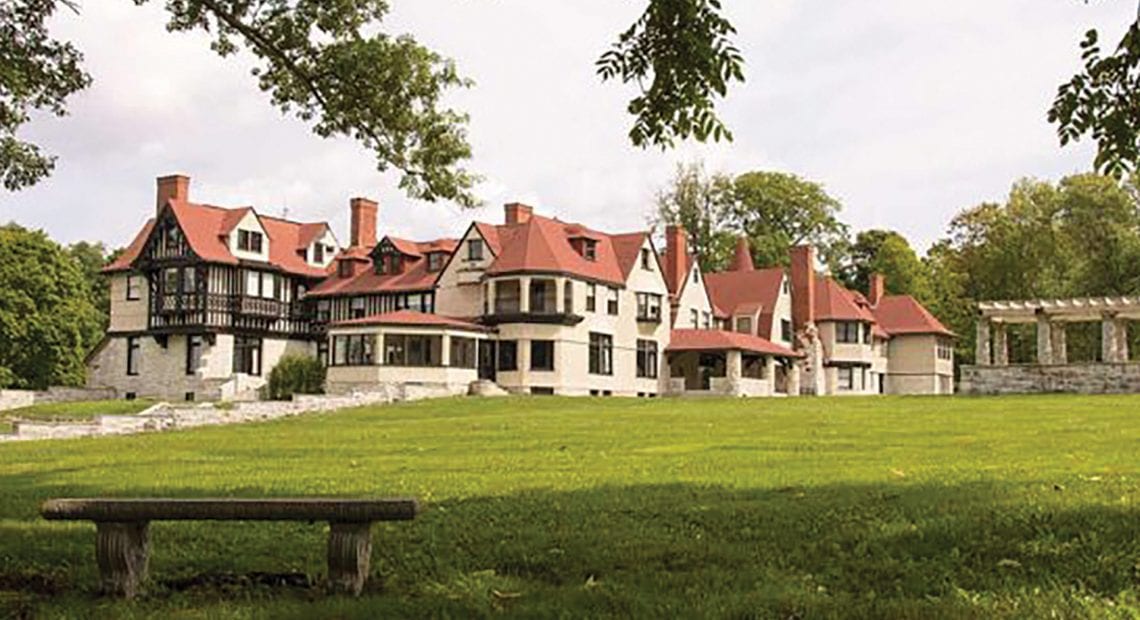
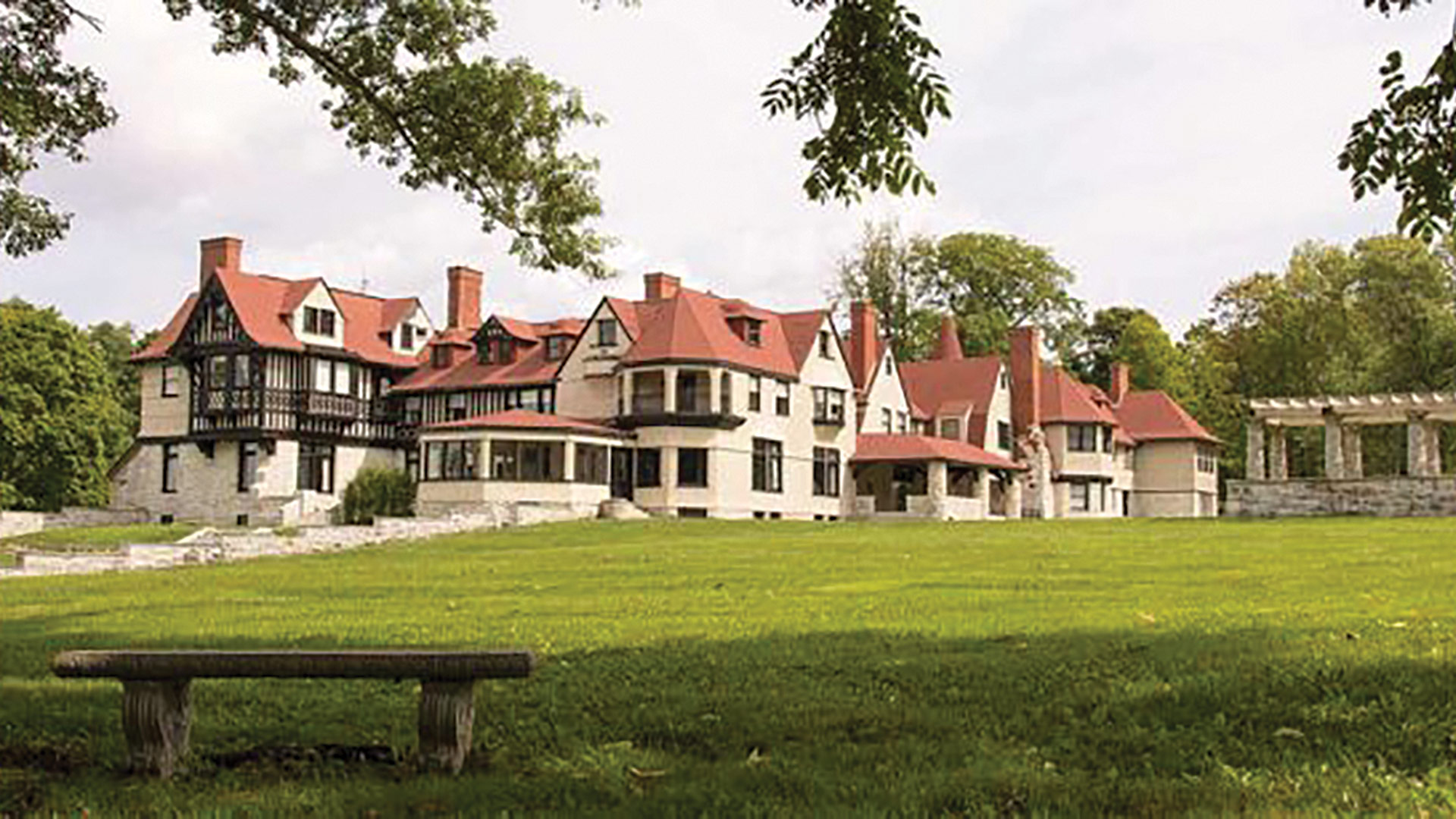
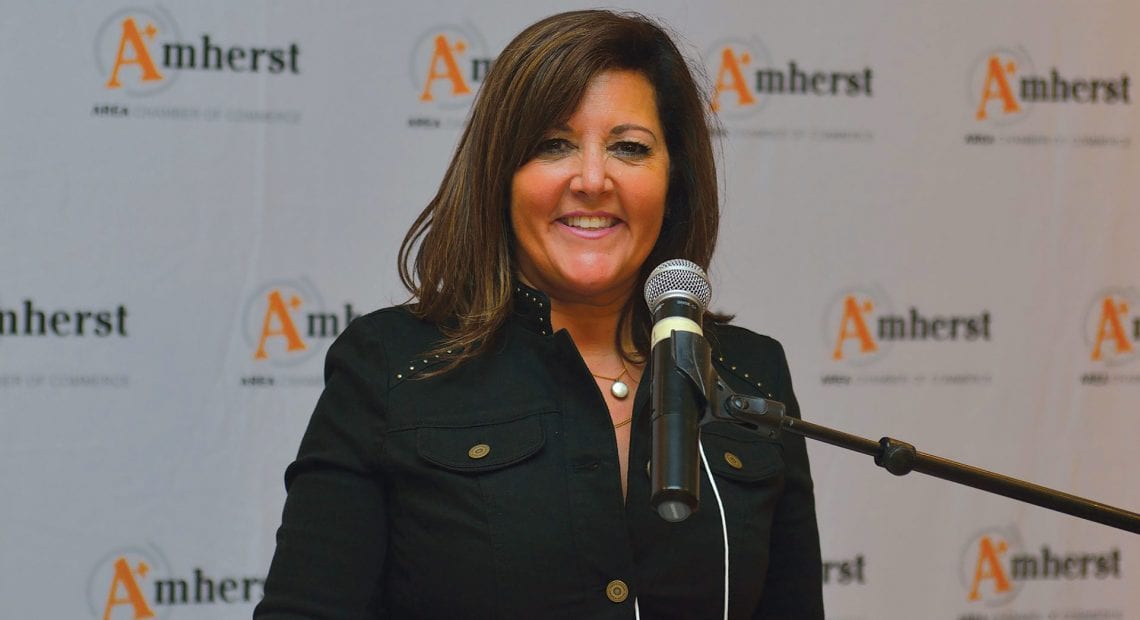
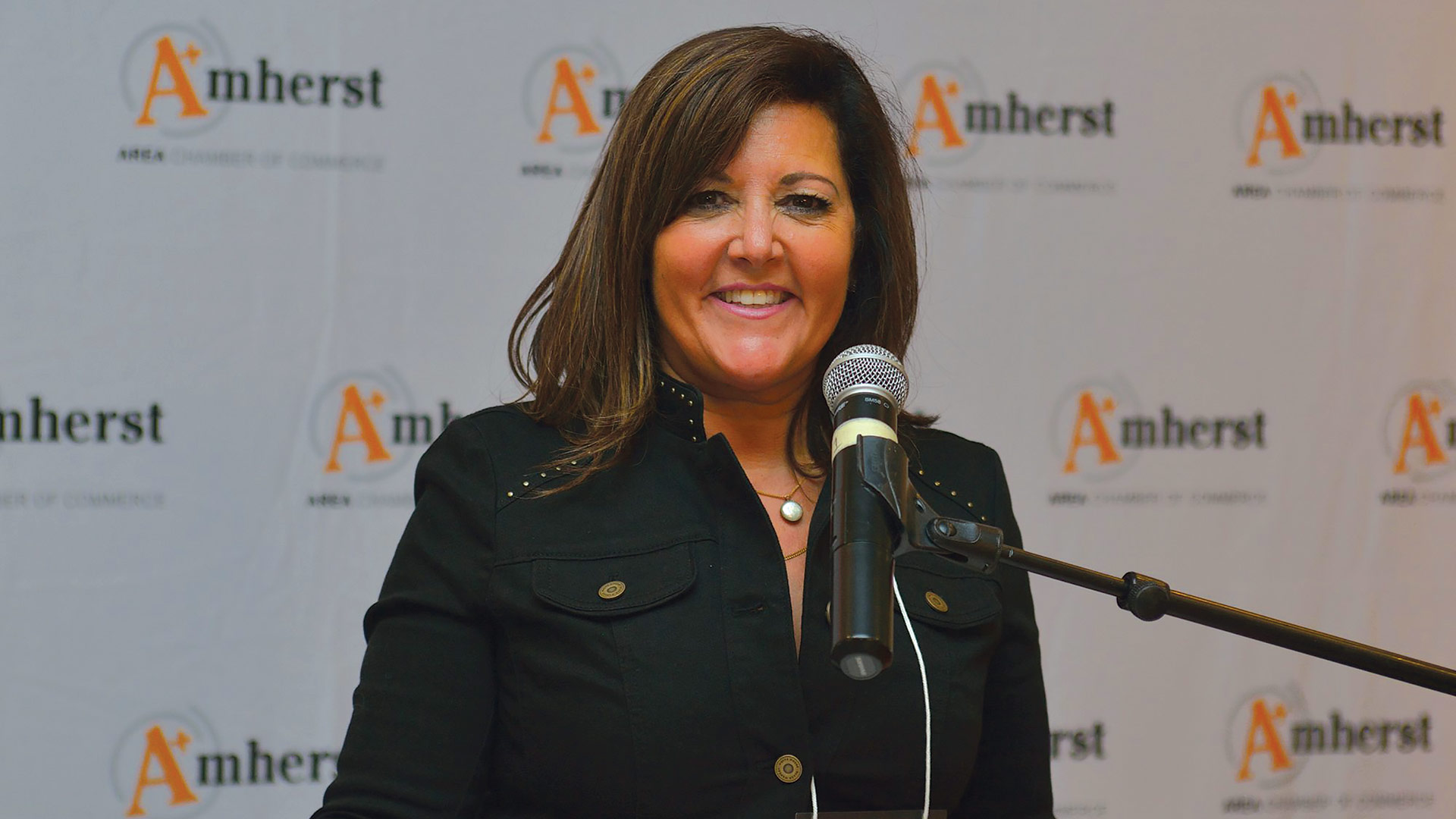











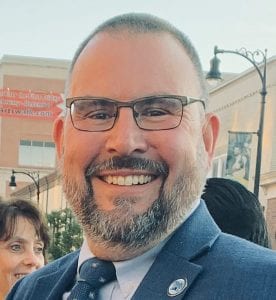





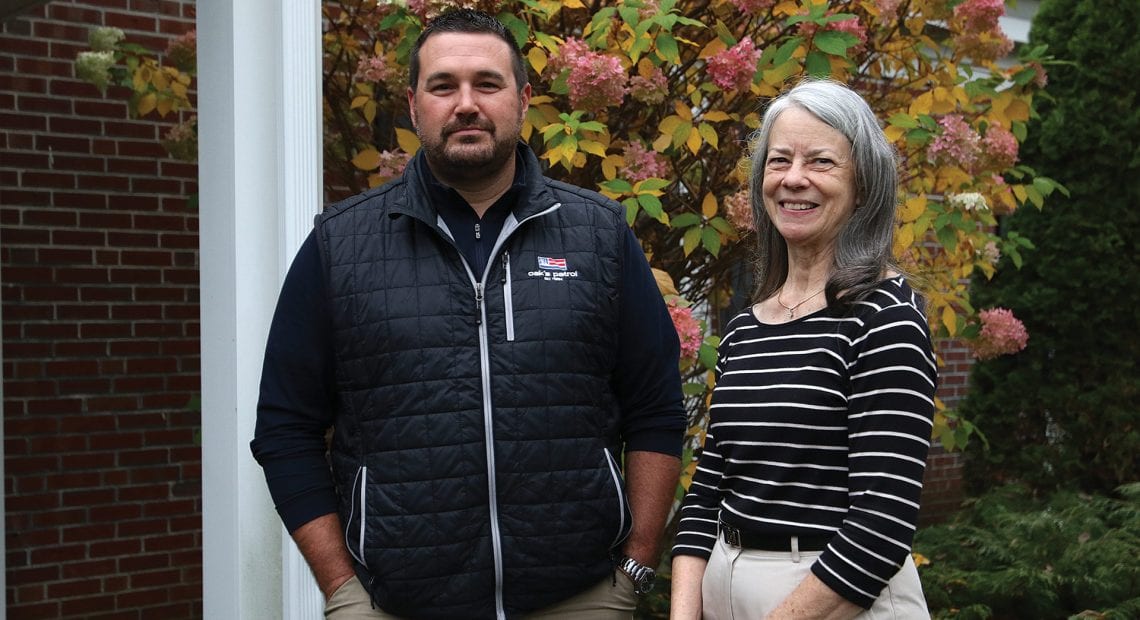
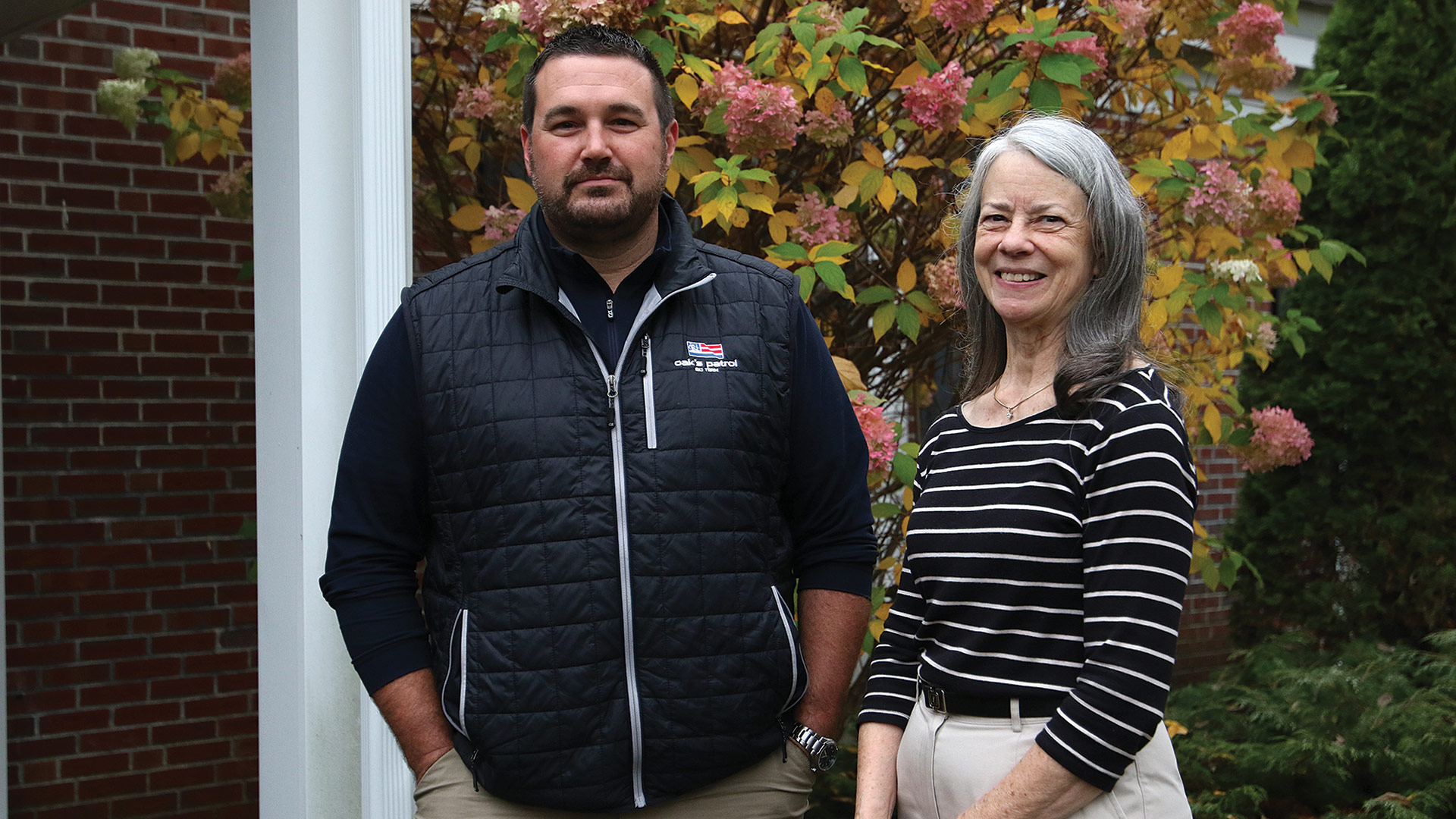


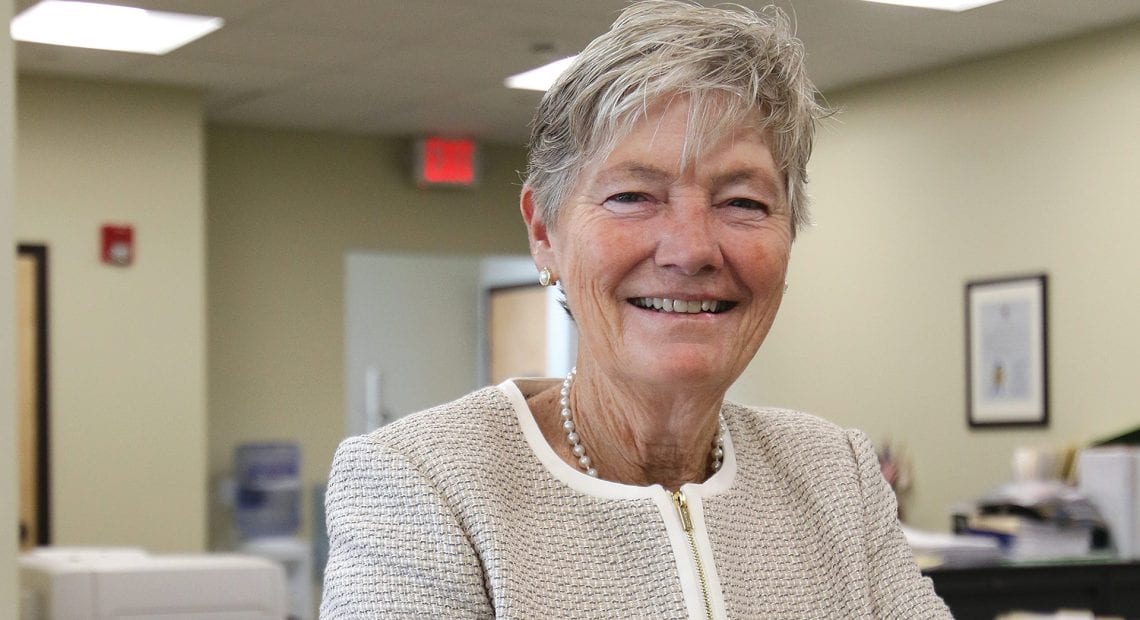
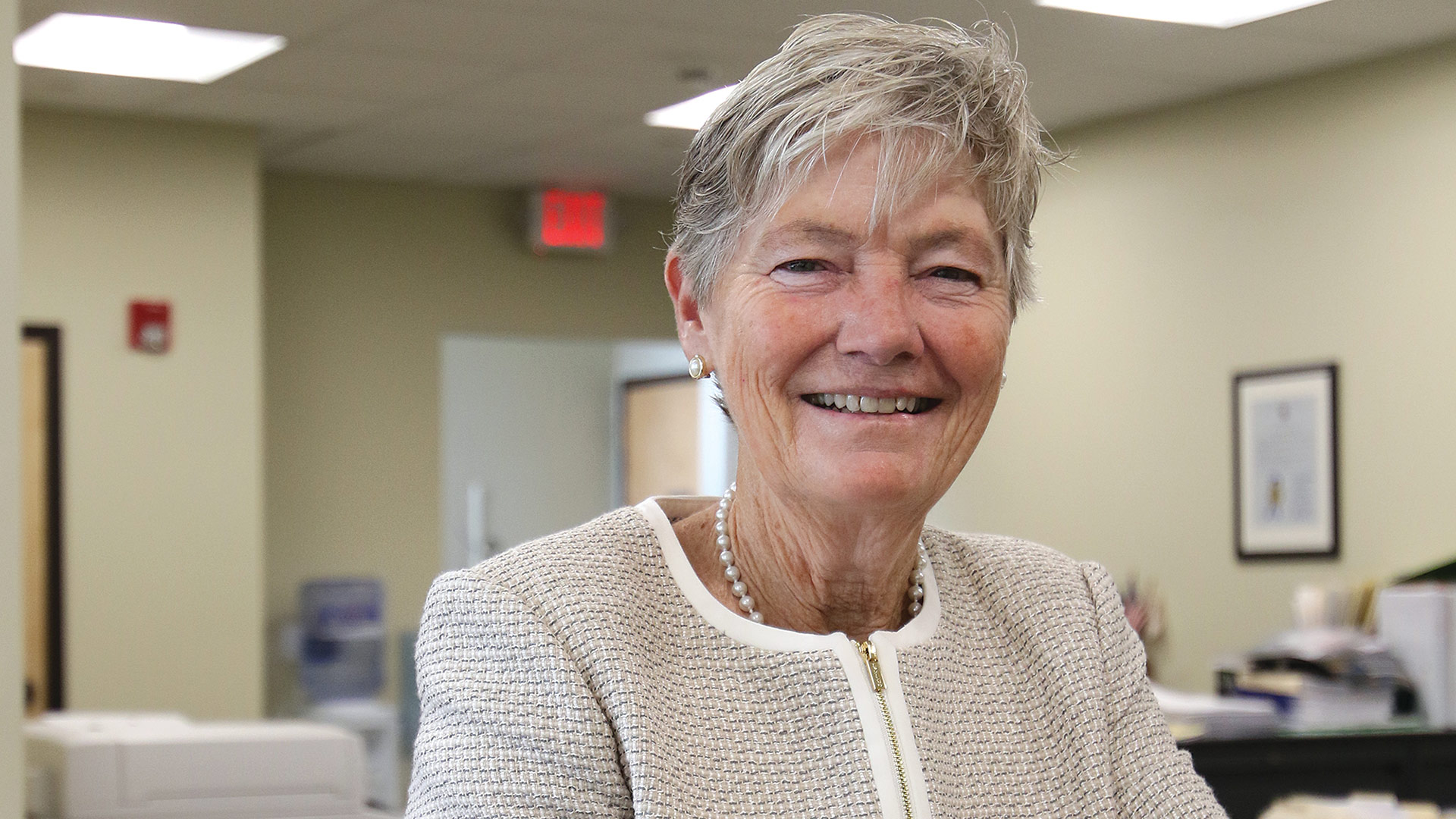


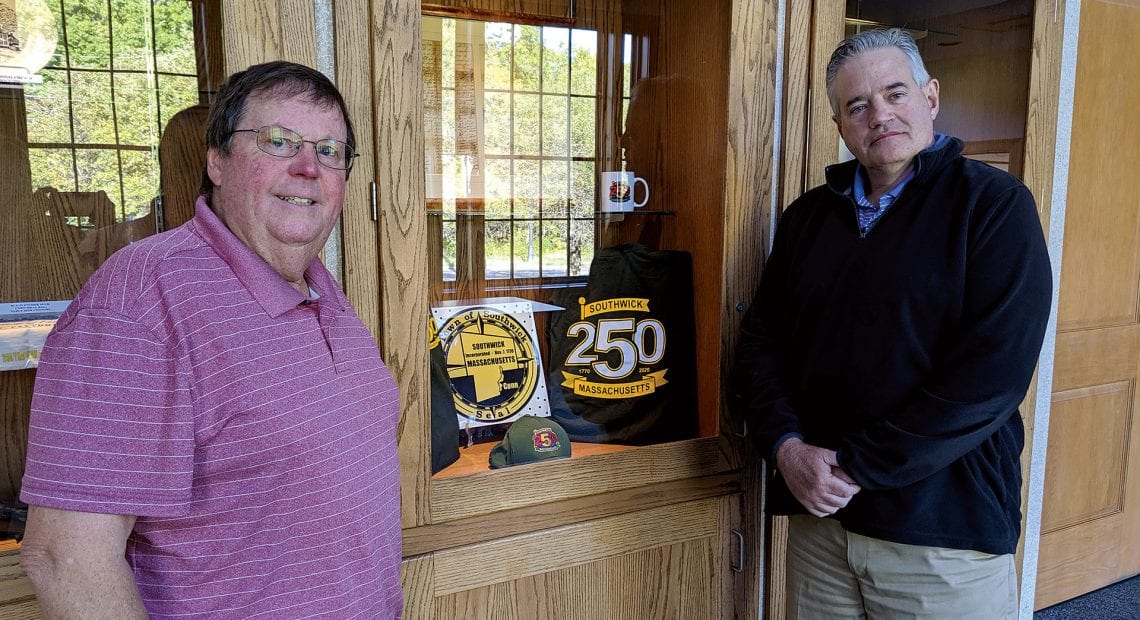


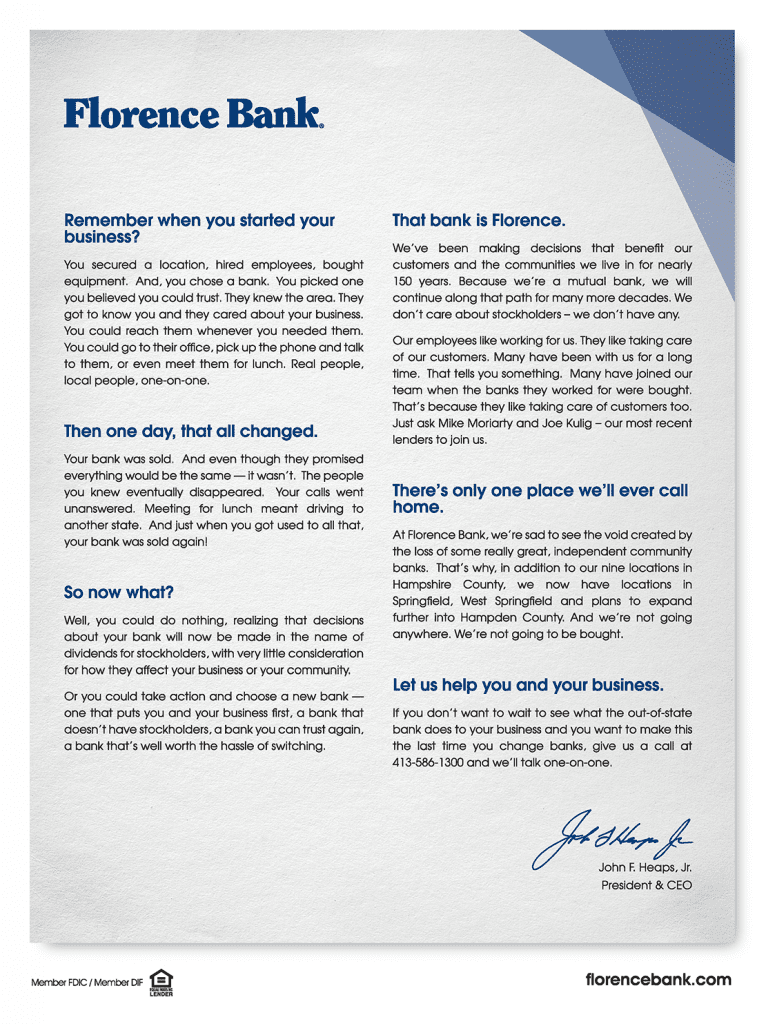
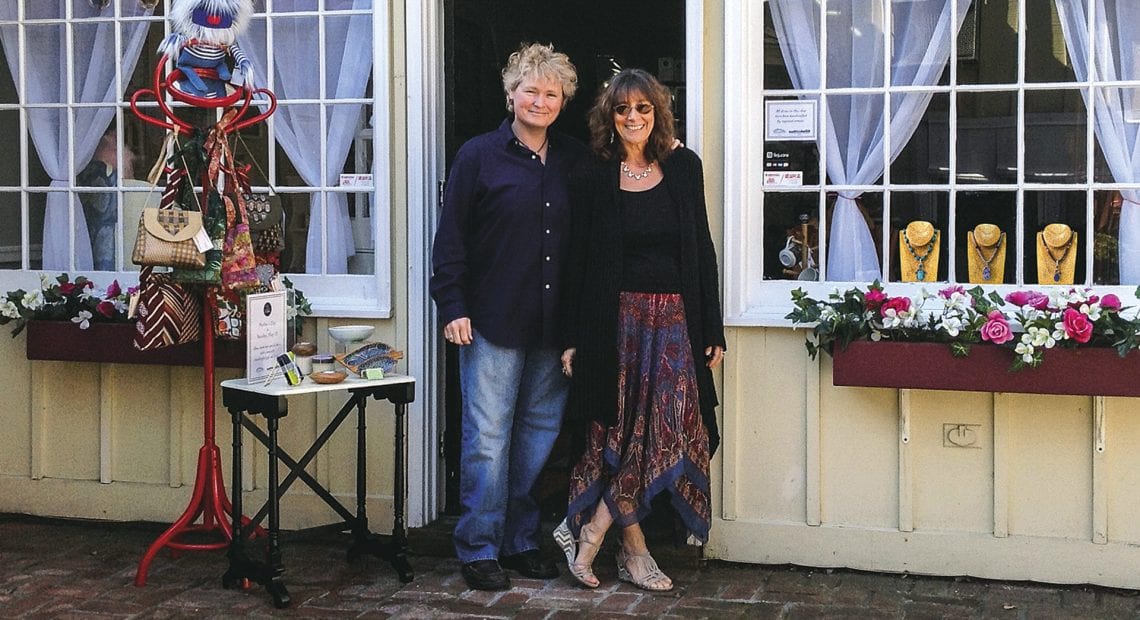
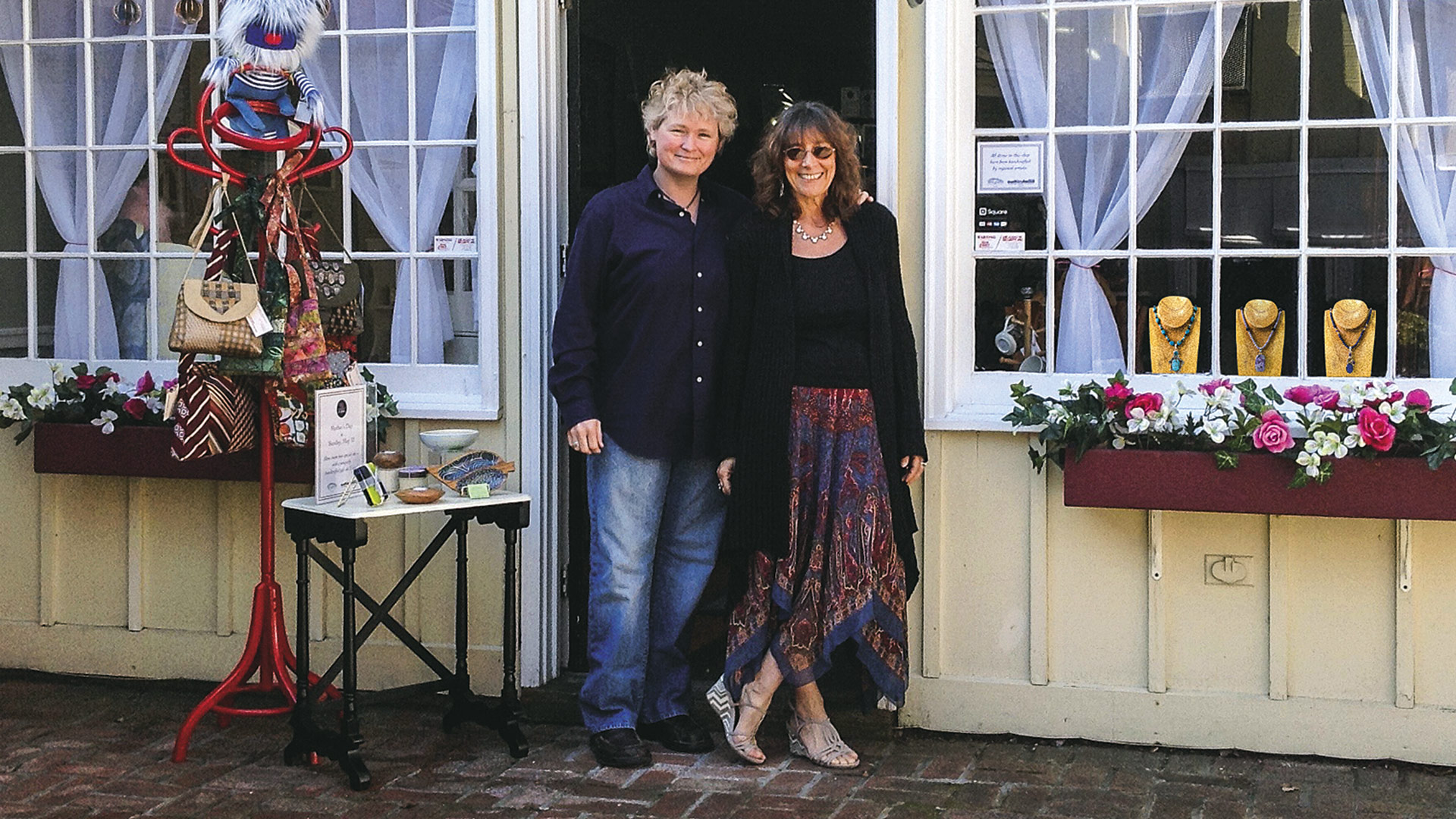



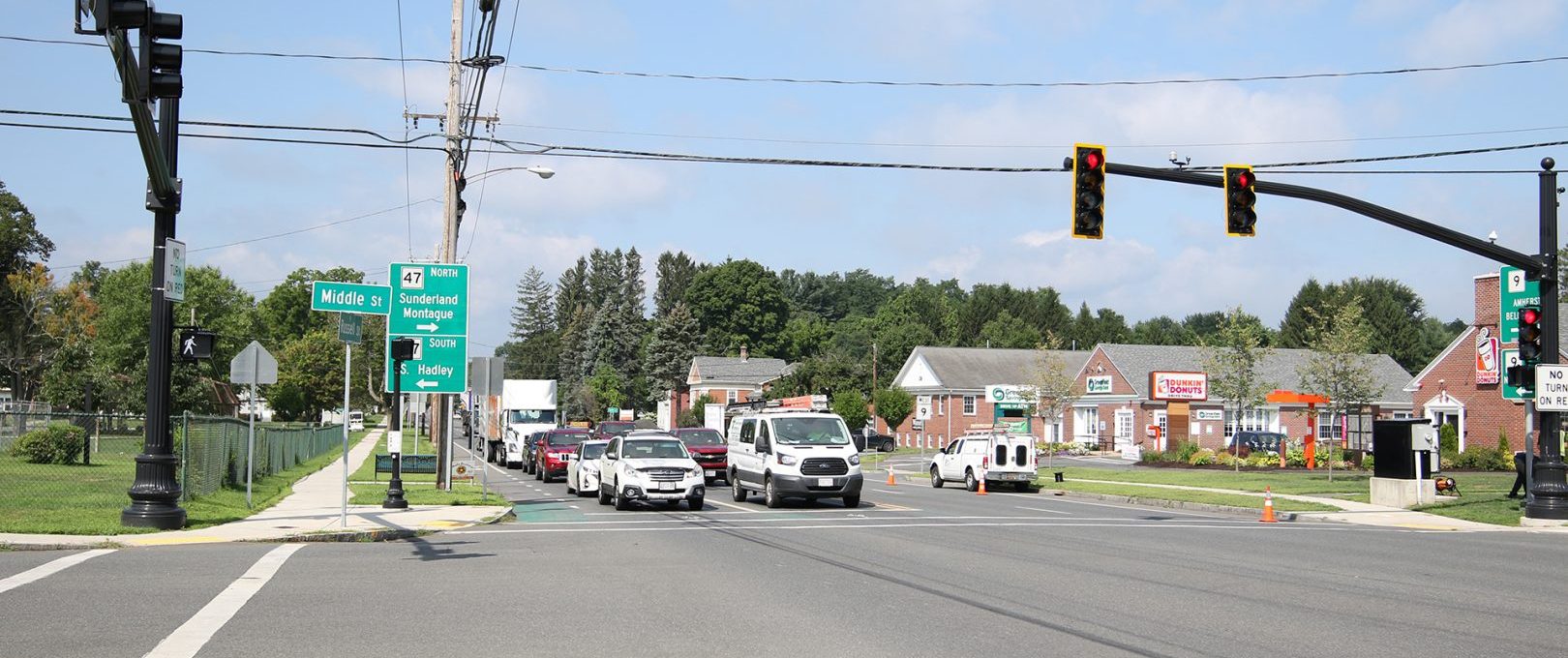 As anyone who lives in Hadley, visits the town, or drives through it knows, Route 9, the main commercial thoroughfare in this still largely agricultural community, is in a seemingly constant state of motion.
As anyone who lives in Hadley, visits the town, or drives through it knows, Route 9, the main commercial thoroughfare in this still largely agricultural community, is in a seemingly constant state of motion.
